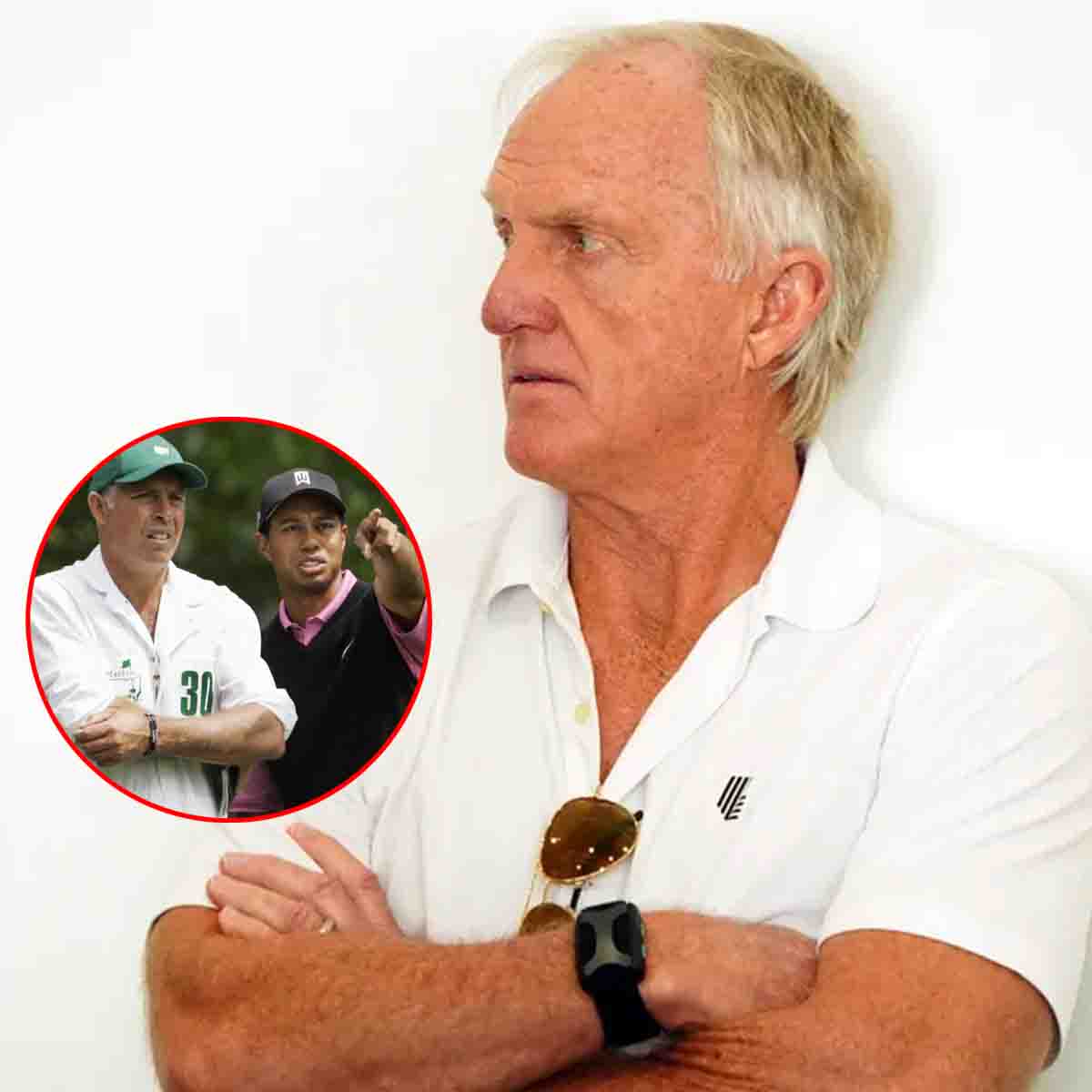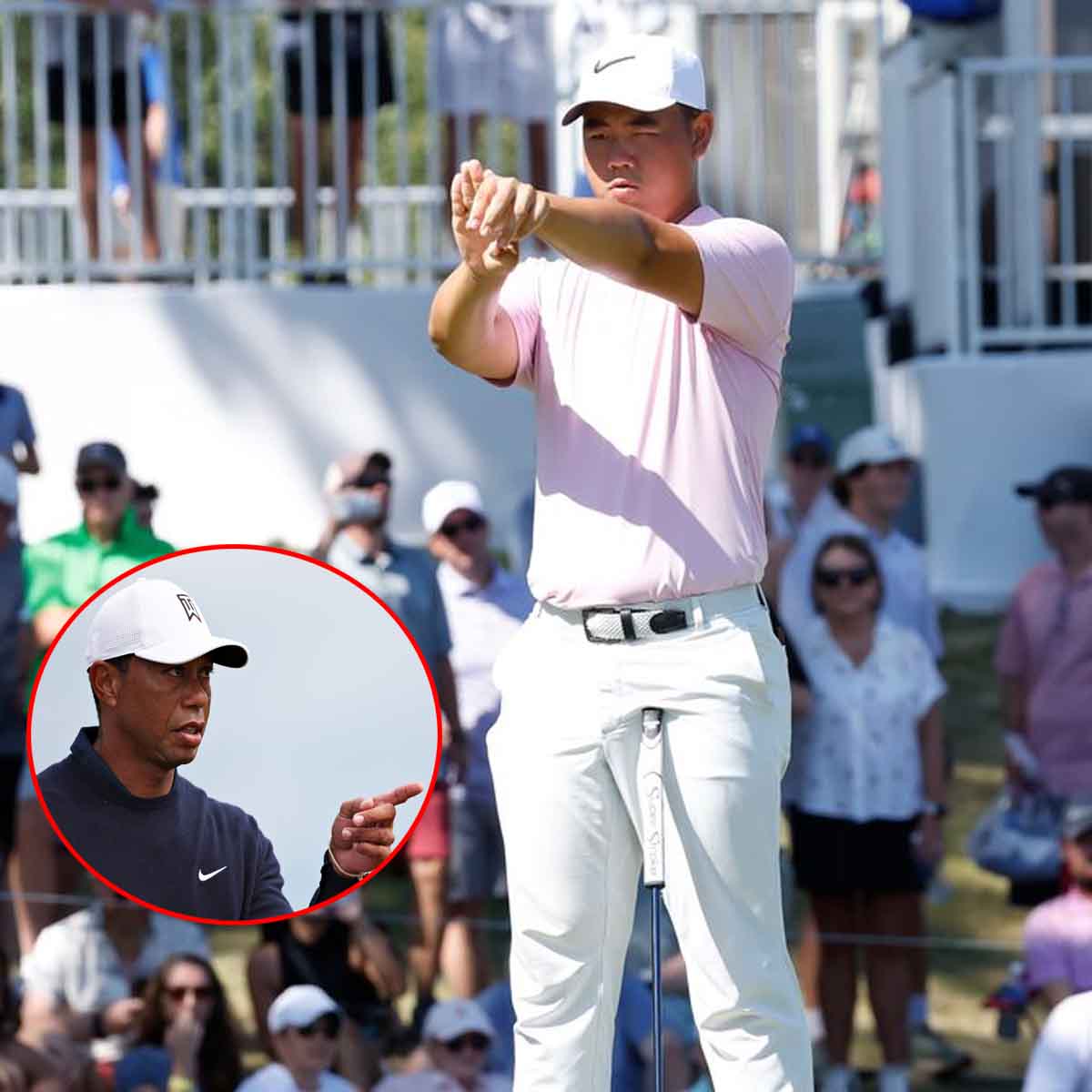
 DAVID BLAKE & JONATHAN SCHOFIELD 4 December 2023Rotters, catwalks and Arndale roof living – a pictorial snapshot of Greater Manchester in the eighties
DAVID BLAKE & JONATHAN SCHOFIELD 4 December 2023Rotters, catwalks and Arndale roof living – a pictorial snapshot of Greater Manchester in the eighties
GREG Garlick was excited. It was 1989, he was Canadian, he was in Manchester and his name was Garlick.
He probably wasn’t excited about his surname, but I was. It amused me that his initials were GG or even Gee Gee and it amused me he’d come such a long way but not on a horse. We’d struck up conversation between songs by the Railway Children (I think), a Factory Records-signed band. We were both stuck to a beery floor in the Boardwalk club on Little Peter Street and I was slugging on a pint of disastrously bad lager. We were two of roughly five people in the club who weren’t on ecstasy.
 View down King Street, 1983
View down King Street, 1983
Greg was holding a carrier bag packed with vinyl, maybe ten albums, from assorted Manchester bands. He was older than me by about five years and was sporting an outrageous pair of flared trousers on skinny legs. He’d flown over from Montreal because of the music, particularly that emanating chaotically from Happy Mondays.
He had come because he wanted to be part of the Madchester moment. “It’s so real,” he gushed, “the music coming out of here makes it the best scene in the world.”
It was a wonderful time to be in a city which seemed at the centre of things.
I didn’t know about that, but I did know that I’d just returned from teaching English in Madrid where there’d been a club called El Sitio which reserved Thursday nights exclusively for music from Manchester. This included not just the Madchester groups but bands such as The Smiths, James, The Fall, Joy Division, New Order and even Simply Red.
GG wasn’t alone in being a moth attracted to the Manc flame. Music fans from all corners of the globe were hanging around on every corner, the queue for the Hacienda reached the moon. I recall seeing a group of Japanese boys and girls falling out of Affleck’s Palace in 1988, every last one of them sporting a Morrissey quiff and clutching a Smiths record, despite the band having broken up the year before.
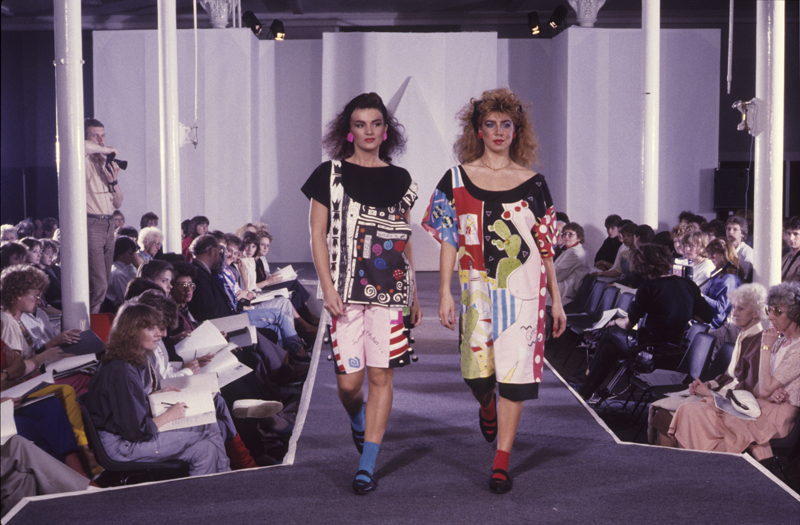 Fashion Show at Manchester Polytechnic in 1984
Fashion Show at Manchester Polytechnic in 1984
Meanwhile the noise of the city traffic was drowned out by Tony Wilson philosophising the moment and Terry Christian making sweeping statements. It was a wonderful time to be in a city which seemed at the centre of things.
The energy of the music scene in Manchester in the eighties was a counterpoint to a lot going wrong as the economic decline of the seventies continued through much of the decade. As one commentator put it: ‘In the decade from 1979, when Mrs Thatcher applied ‘monetarism’, 94 per cent of all job losses occurred north of a line drawn from the Wash to the Severn. Of the manufacturing jobs lost, 70 per cent were from the North.’
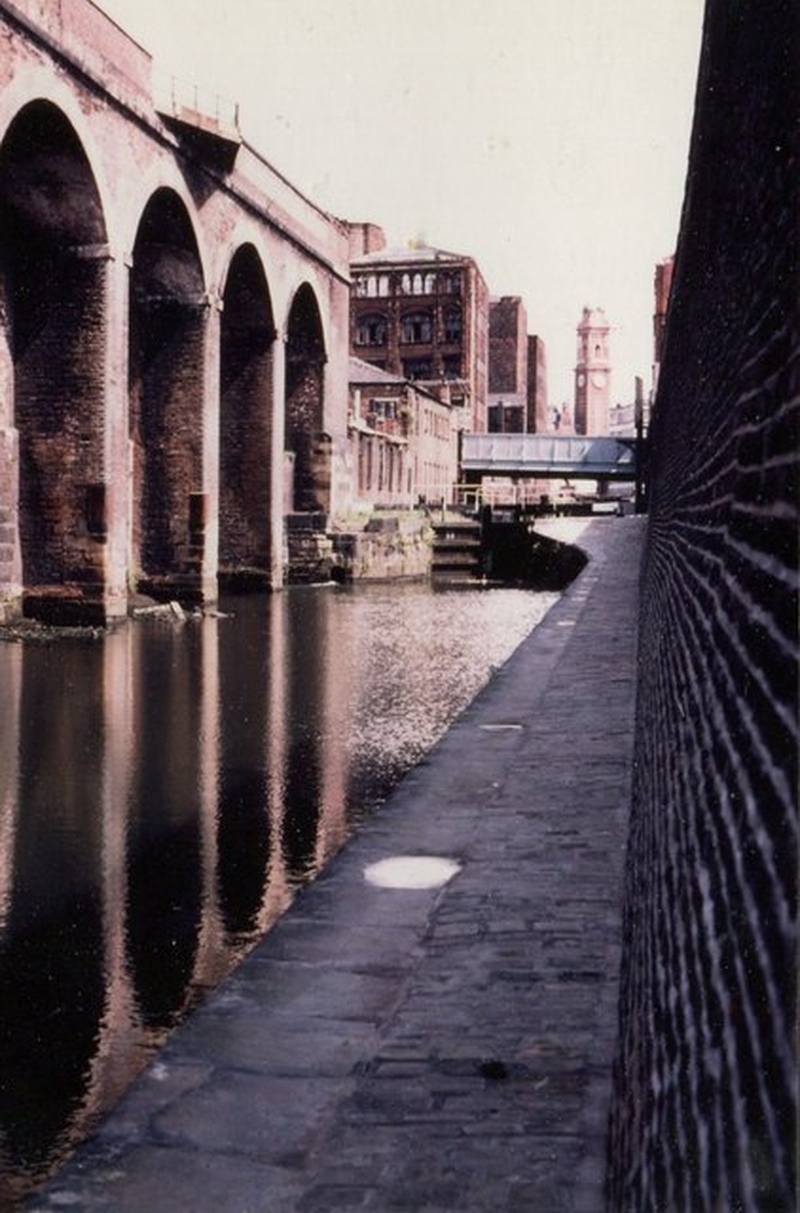 Rochdale Canal, 1983
Rochdale Canal, 1983
Understandably there was a lot of politics about.
In 1986, the Conservative government abolished the metropolitan counties, such as Greater Manchester, as it considered them inefficient and addled with Labourites resisting the new neo-Liberal reality. Such repeated attacks, or perceived attacks, and the evident economic decline in the older industrial areas polarised much of the country. Thus the 80s were the decade in which Conservative influence on the council politics of the City of Manchester began to rapidly whither. There are no Tory councillors in the City of Manchester today because of the path chosen by the Tory government in the 1980s.
Don’t forget to check out our galleries from 1960s and 1970s.
Initially the Labour Group in Manchester became as militant as that in Liverpool. This can be seen in council initiatives such as becoming the first Nuclear Free City in 1980, a response to the palpable threat of nuclear annihilation at the height of the Cold War. It was a progressive gesture but largely symbolic. More significantly the city became a centre for anti-Thatcher protest over issues such as the Poll Tax and Section 28, the latter attempting to ban the ‘promotion of homosexuality’ by local authorities.
Yet, at the same time, seeds were planted for reconstruction. Council Leader Graham Stringer, once a firebrand of the left, began to create alliances that would lead to Manchester becoming a beacon for public and private sectors working together to deliver results. It was during the 80s, for instance, that Manchester began bidding for the Olympic Games. This failed but led eventually to the 2002 Commonwealth Games. More importantly the bids showed how the city, in both the public and the private sectors, could pull together. That legacy remains.
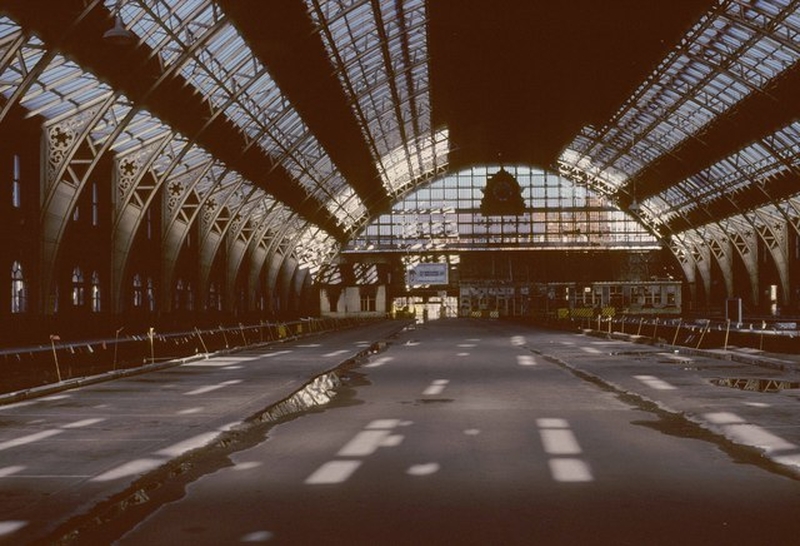 The abandoned Central Station was converted into the Greater Manchester Exhibition Centre (G-Mex)
The abandoned Central Station was converted into the Greater Manchester Exhibition Centre (G-Mex)
There were many physical changes in the 80s, such as when the shattered and abandoned Central Station was converted into the Greater Manchester Exhibition Centre (now Manchester Central) in 1986. Chinatown came into its own during the decade and the Gay Village became a reality. The creation of the Central Manchester Development Corporation in 1988 started to deliver renovation in the former warehouse areas and canal basins. The Museum of Science and Industry opened in 1983 and Castlefield was dragged back to active life.
For the first time in almost sixty years city centre living was being recreated with flats on top of the Arndale Centre, and in townhouses in St John’s and off Tib Street. The St John’s Gardens flats were completed in 1980 and despite appearances their design must have worked very well because several of them are still occupied by people who moved in forty-three years ago.
Along Whitworth Street, the packing warehouses were also becoming flats. Even the rundown ex-markets area around High Street gained a sniff of a hint of future gentrification when the late Peter O’Grady’s team opened the Market Restaurant: although Mackie Mayor, Sea Urchin, Wolf at the Door seemed a very long and very unimaginable way off. Ancoats with a Michelin starred restaurant would have seemed science fiction.
Unfortunately new architecture during the decade was appalling
Over in Salford an Enterprise Zone was created at the redundant headwaters of Manchester Ship Canal. By the mid-80s the area was being transformed with offices, houses and flats, although it would take the best part of two decades for the redevelopment to begin to mature.
Unfortunately new architecture during the decade was appalling. It’s hard to bring to mind a single good new building aside from Siemens House by Mills, Beaumont, Leavey on Princess Parkway. The worst of the worst, because of the location, was the apologetic, ugly and unambitious duo of Heron House and Commercial Union House facing the Town Hall. These were disastrous non-entities that still blight what will be, in a year, our finest civic space.
So much of the inner core was being felled. The 80s was the period of maximum contraction of the city centre when it became a shadow of its nineteenth century self. The top picture here shows a surface car park where the National Football Museum presently sits, it shows a wasteland.
One writer Charles Jencks put it this way when viewing that older city: ‘Look again at those buildings. As examples of frozen energy they fill you with amazement. Some Mancunians must have been giants. What dreams did those people have? And do they still have them?’
Fortunately as the 80s progressed it was becoming clear we did.
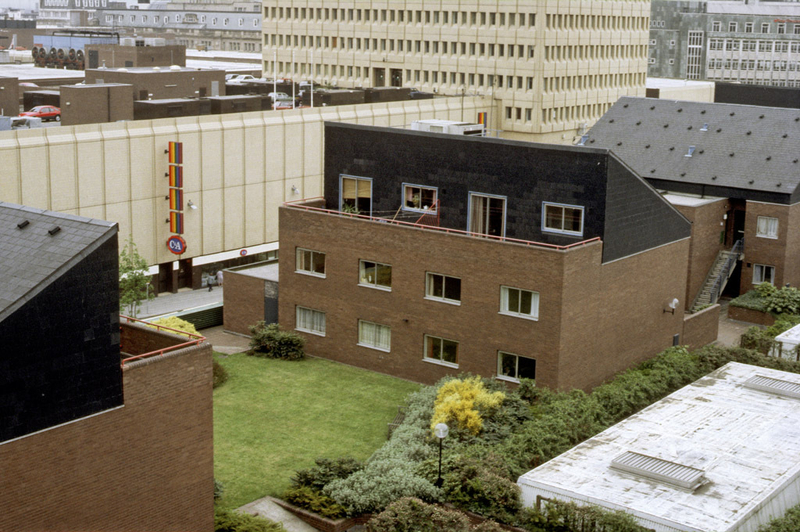 Maisonettes on the roof of Manchester Arndale Centre, 1985
Maisonettes on the roof of Manchester Arndale Centre, 1985
Some elements of city life were probably much better than presently. Retail was far healthier in the 1980s than in the present post-Covid Amazon age. While Oldham Street slipped, the Arndale Centre and Market Street got busier every year. The notion of there ever being an empty shop unit on King Street or St Ann’s Square would have been laughed at – look at the pictures on this page. Affleck’s Palace and the Craft and Design Centre opened. The Corn Exchange became a crazy emporium of leftfield shops.
In sport, while City drifted, United began to realise its potential as it began to improve the ground, add hospitality and push attractions such as the museum. In 1986 Alex Ferguson became the manager, and after a difficult start, it was clear United were heading for national domination under the Scot. Crazy as it would seem in the mid-80s, United were about to ‘knock Liverpool off their perch’.
The music scene was already dominant, as we have seen.
This was underlined when in 1989 the Stone Roses and Happy Mondays appeared on the same episode of Top of the Pops. They had a distinctive look and a distinctive sound. Madchester suddenly became a UK phenomenon and not just amongst music fans. That Top of the Pops show seemed a fitting way for the 80s to close. The 90s were coming and there was a sense things were on the move. There was a sense the city could find a role for itself in the post-industrial world.
Greg Garlick, all the way from Montreal, would have been in total agreement.
Jonathan Schofield
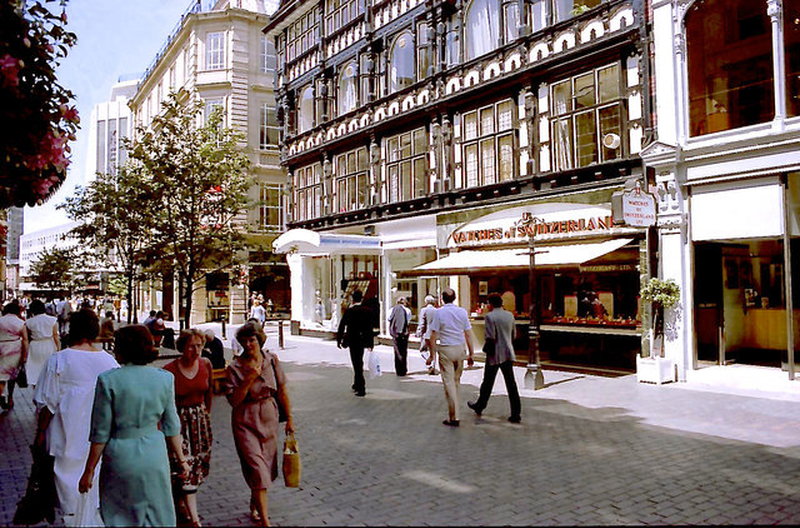 King Street, 1985
King Street, 1985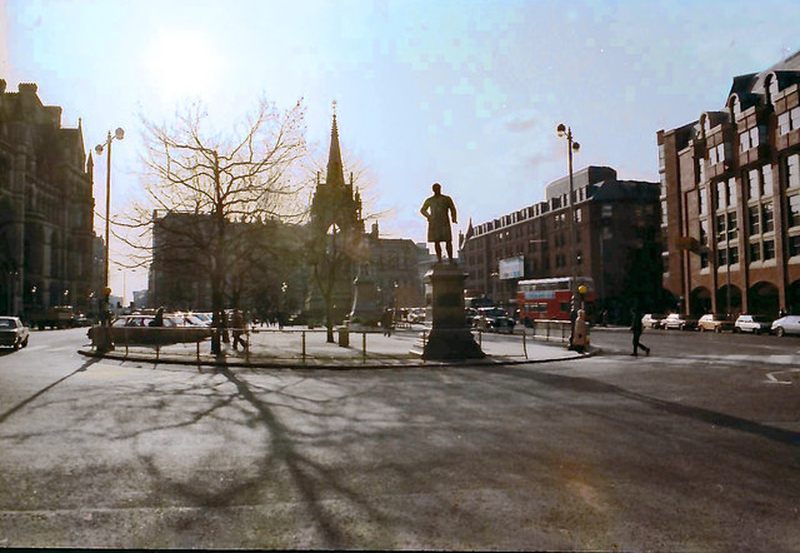 Albert Square, 1985
Albert Square, 1985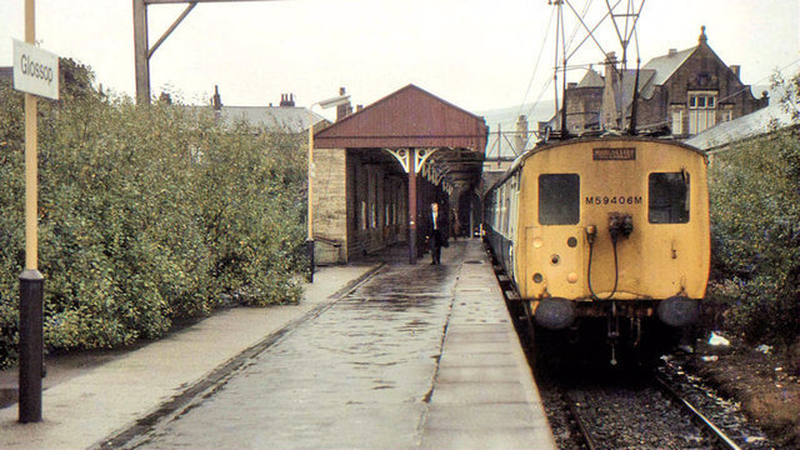 Glossop Station, 1983
Glossop Station, 1983 St Ann’s Square, 1984
St Ann’s Square, 1984 Summer in St Mary’s Parsonage, 1983
Summer in St Mary’s Parsonage, 1983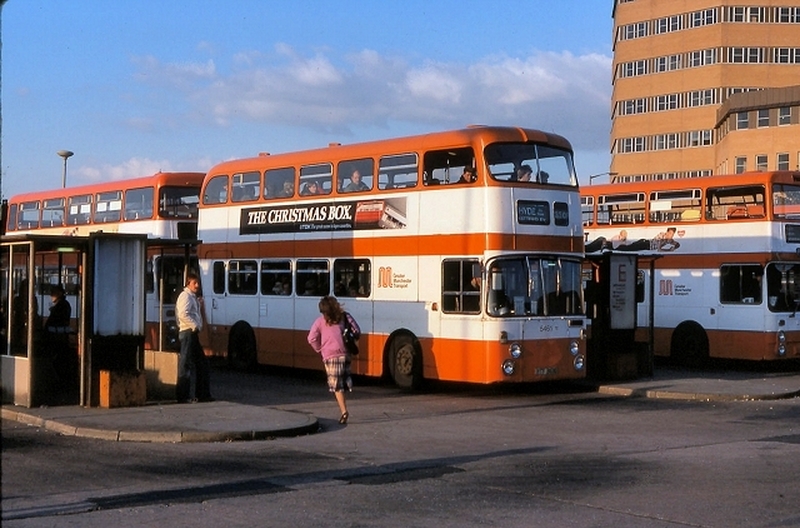 Ashton-Under-Lyne Bus Station in 1981 David Dixon
Ashton-Under-Lyne Bus Station in 1981 David Dixon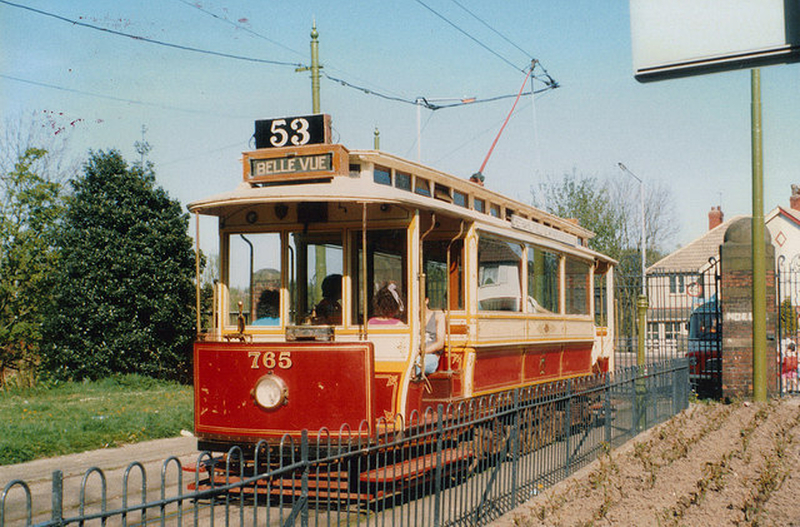 Heaton Park tram, 1989
Heaton Park tram, 1989 GNR goods warehouse, Deansgate, 1980
GNR goods warehouse, Deansgate, 1980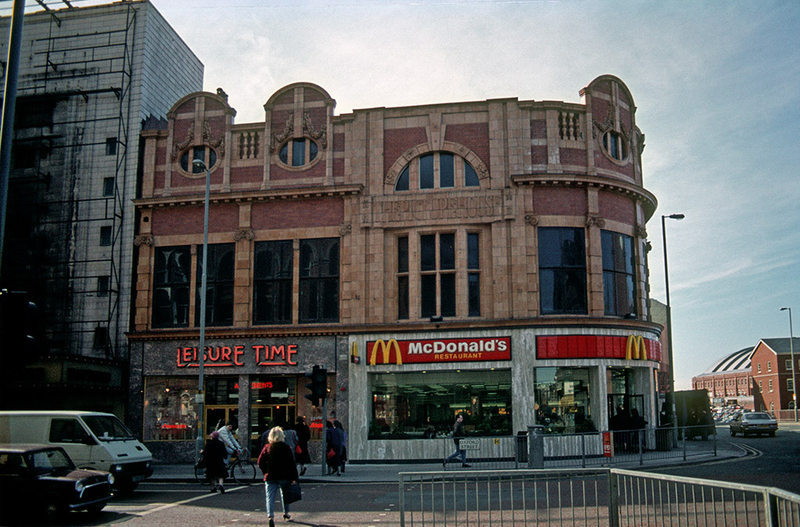 Picture House cinema, Oxford Street, 1987
Picture House cinema, Oxford Street, 1987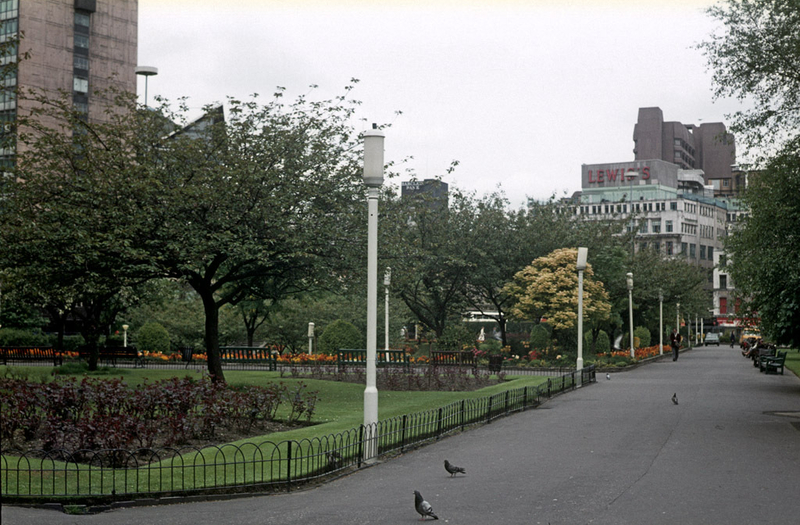 Piccadilly Gardens, 1983.
Piccadilly Gardens, 1983.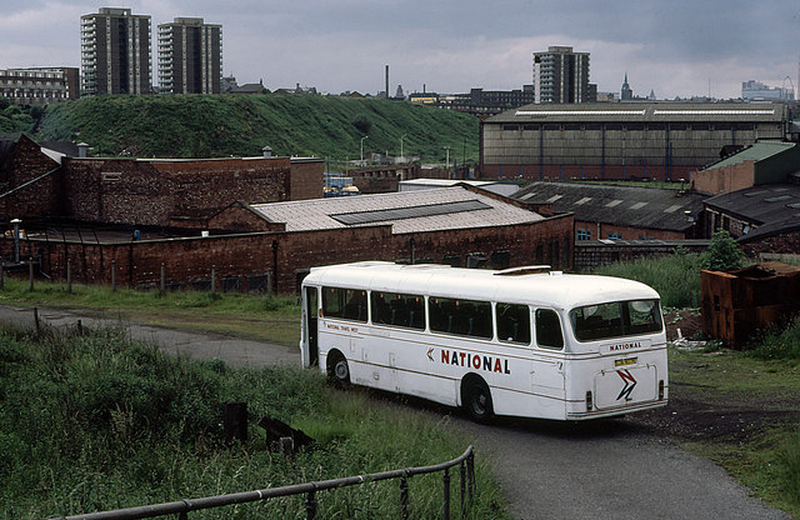 Bus beside the River Irk, 1981
Bus beside the River Irk, 1981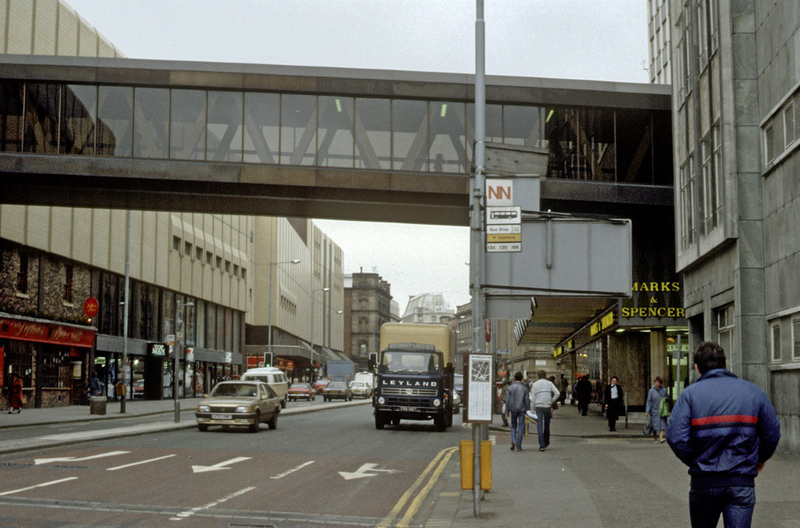 Manchester Arndale Centre, 1985
Manchester Arndale Centre, 1985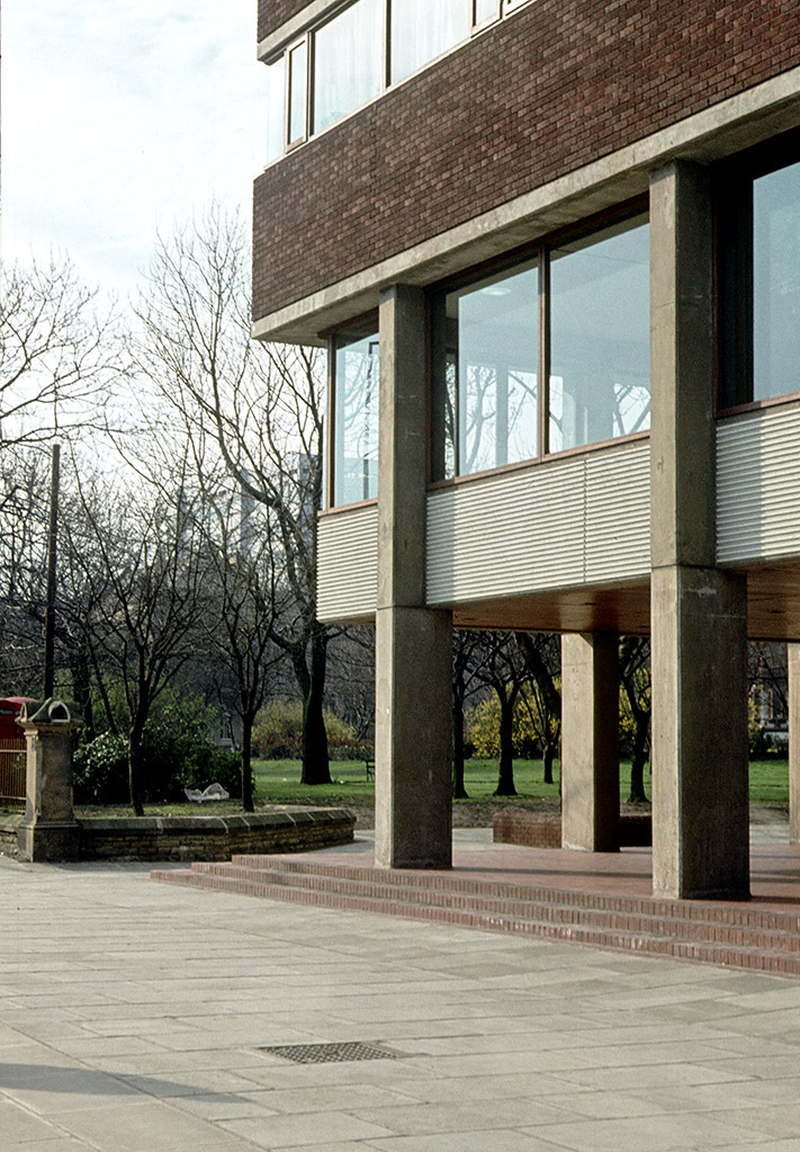 All Saints Building, c.1980
All Saints Building, c.1980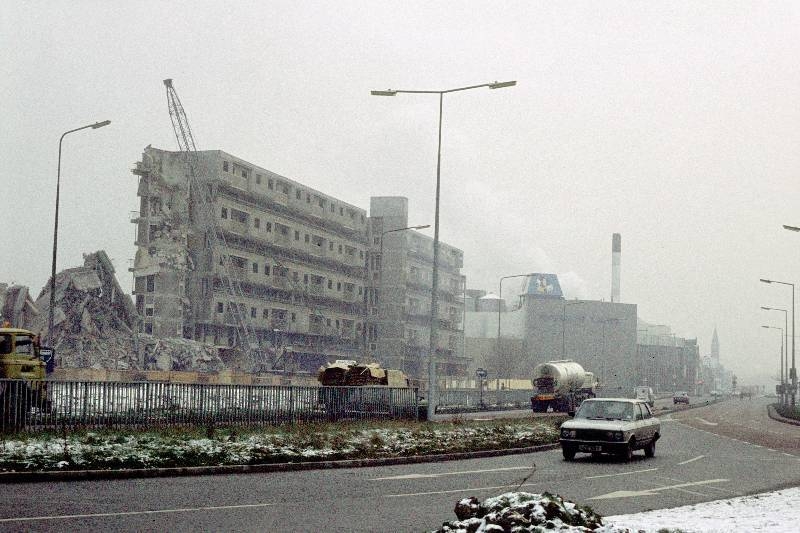 Demolition of flats on the Hulme/Moss Side border, 1985
Demolition of flats on the Hulme/Moss Side border, 1985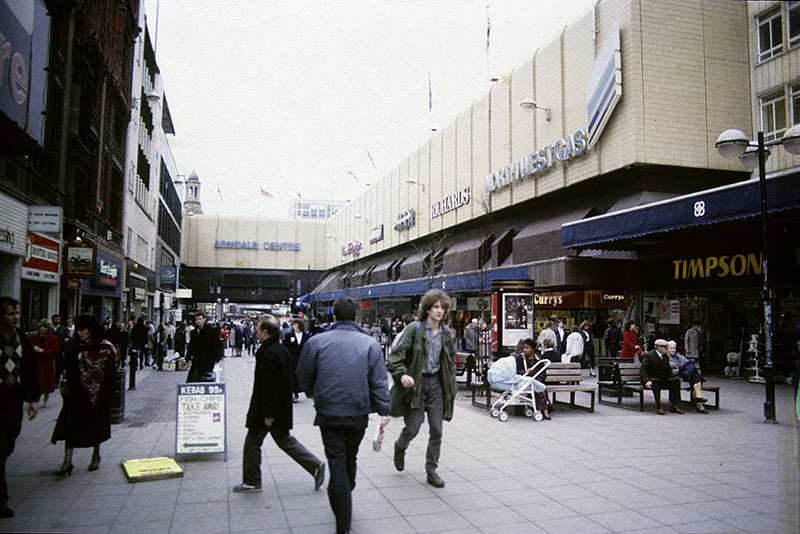 Market Street and the Arndale Centre, 1989
Market Street and the Arndale Centre, 1989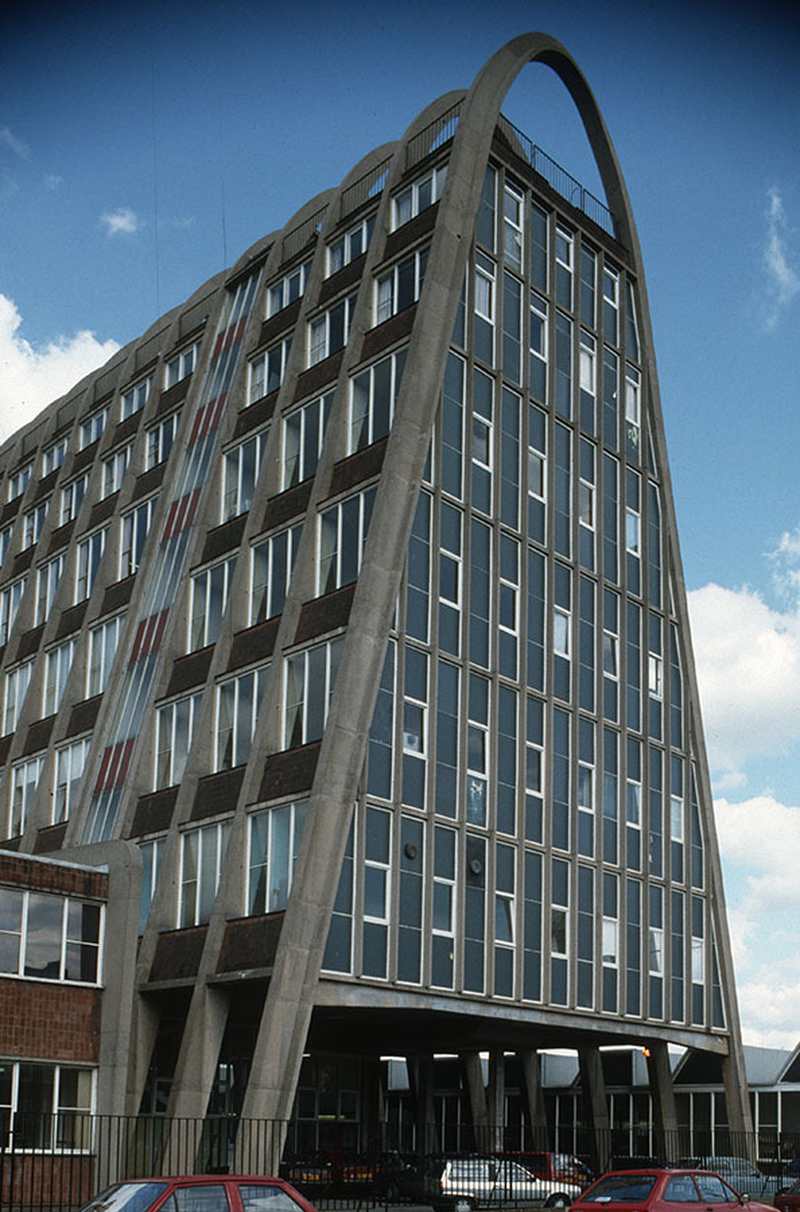 Hollings Building, c. 1980
Hollings Building, c. 1980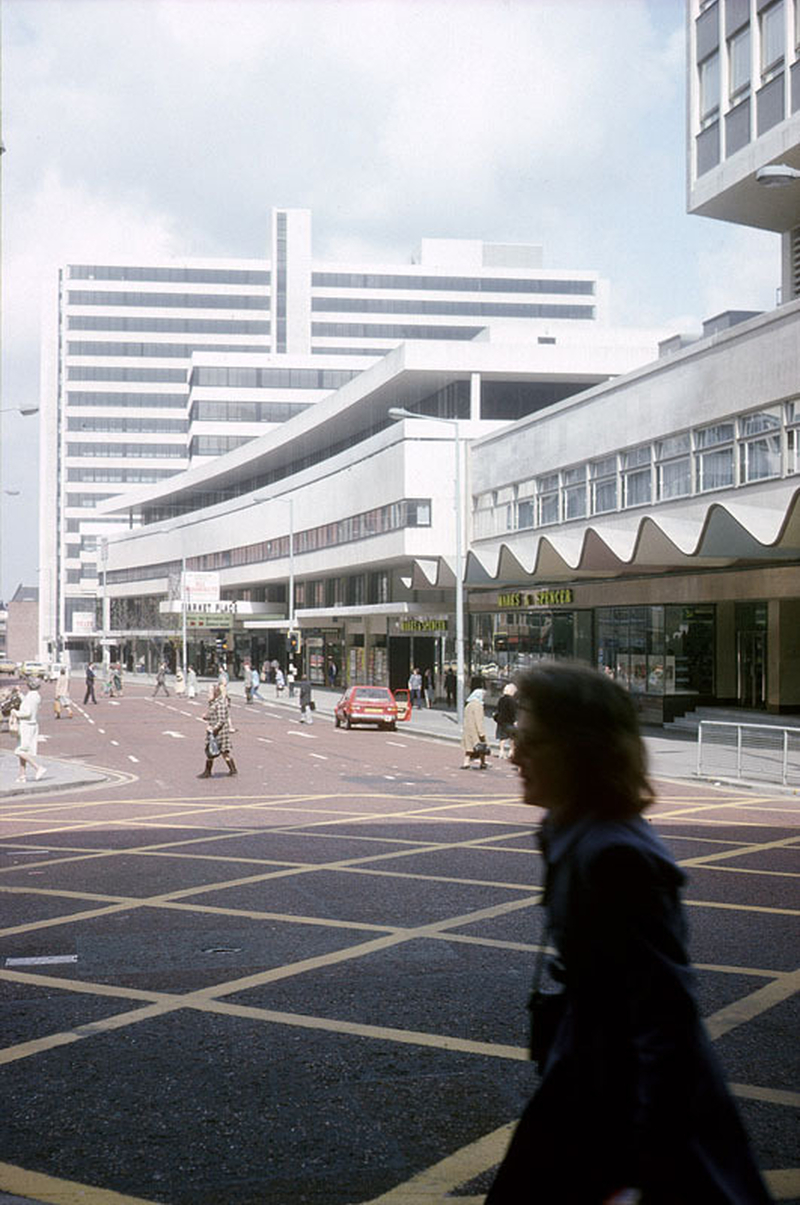 St Mary’s Gate, c. 1980
St Mary’s Gate, c. 1980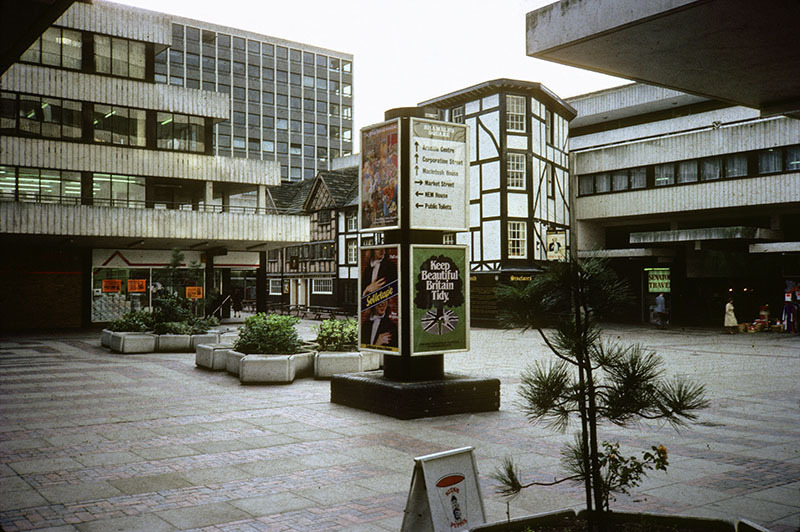 Shambles Square, 1983
Shambles Square, 1983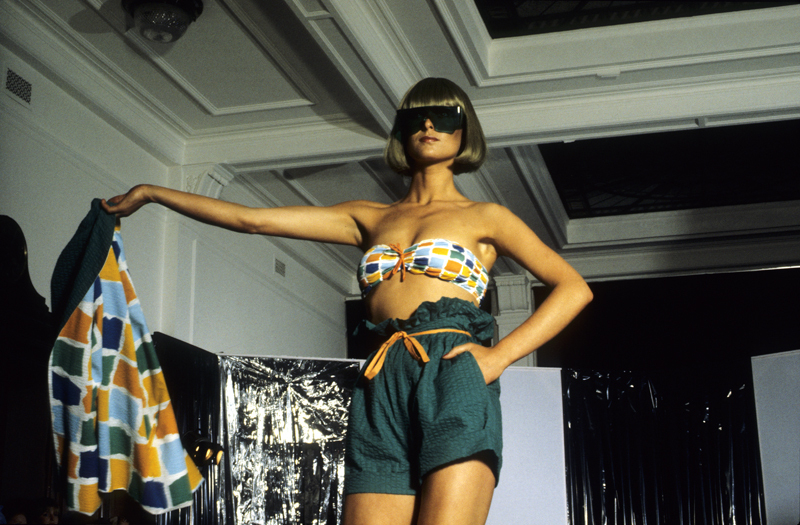 Fashion Show, Manchester Polytechnic, 1980
Fashion Show, Manchester Polytechnic, 1980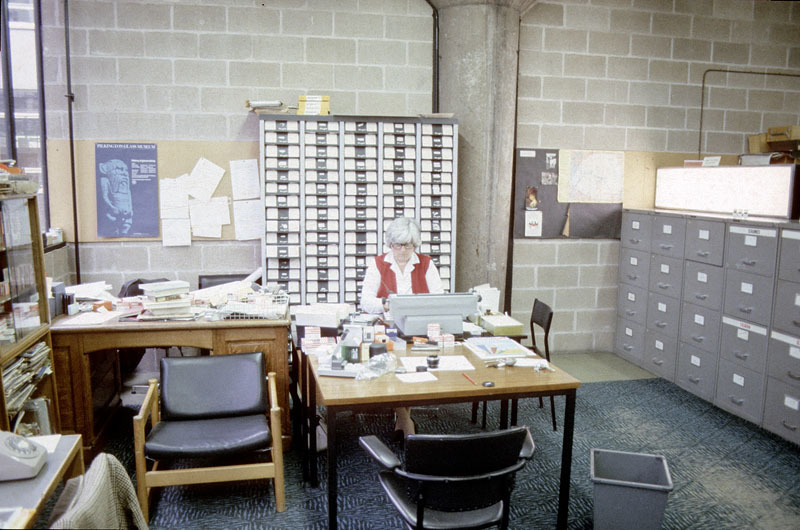 Slide Library, Manchester Polytechnic, 1983-84
Slide Library, Manchester Polytechnic, 1983-84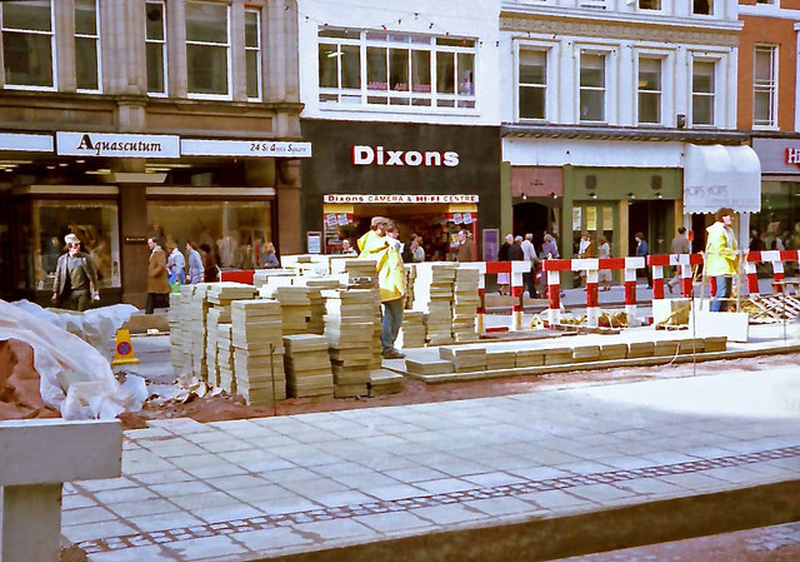 St Ann’s Square, 1984
St Ann’s Square, 1984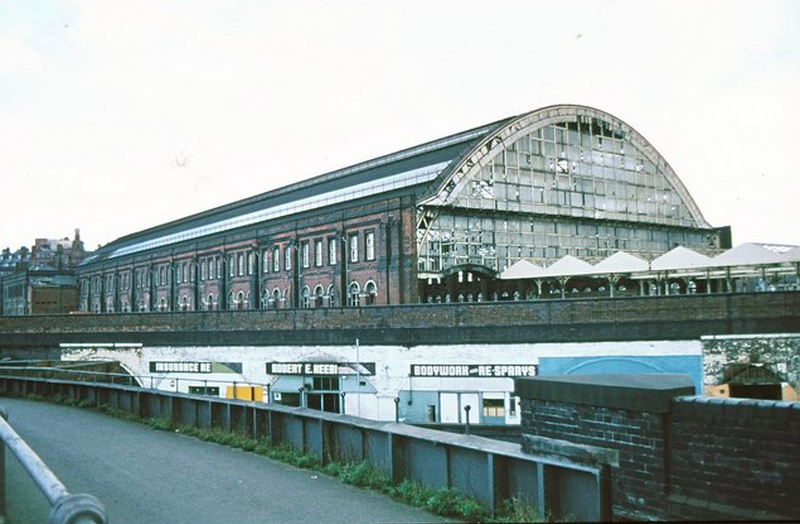 Central Station, 1980
Central Station, 1980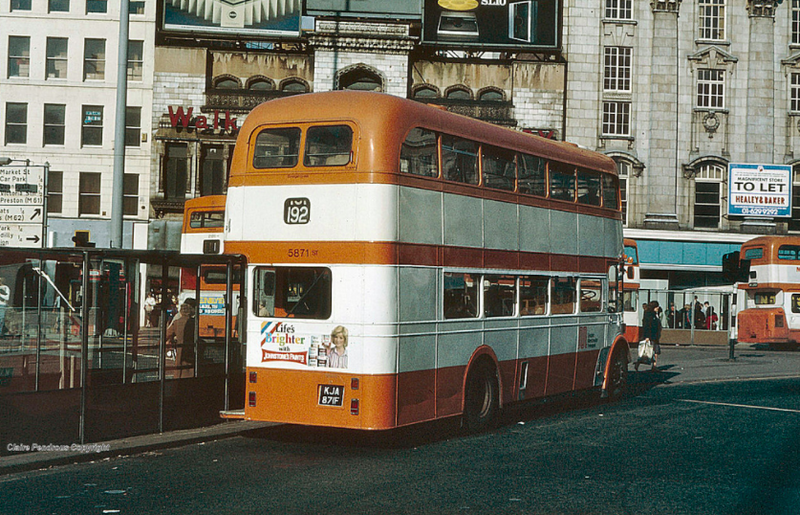 Piccadilly Gardens, 1980
Piccadilly Gardens, 1980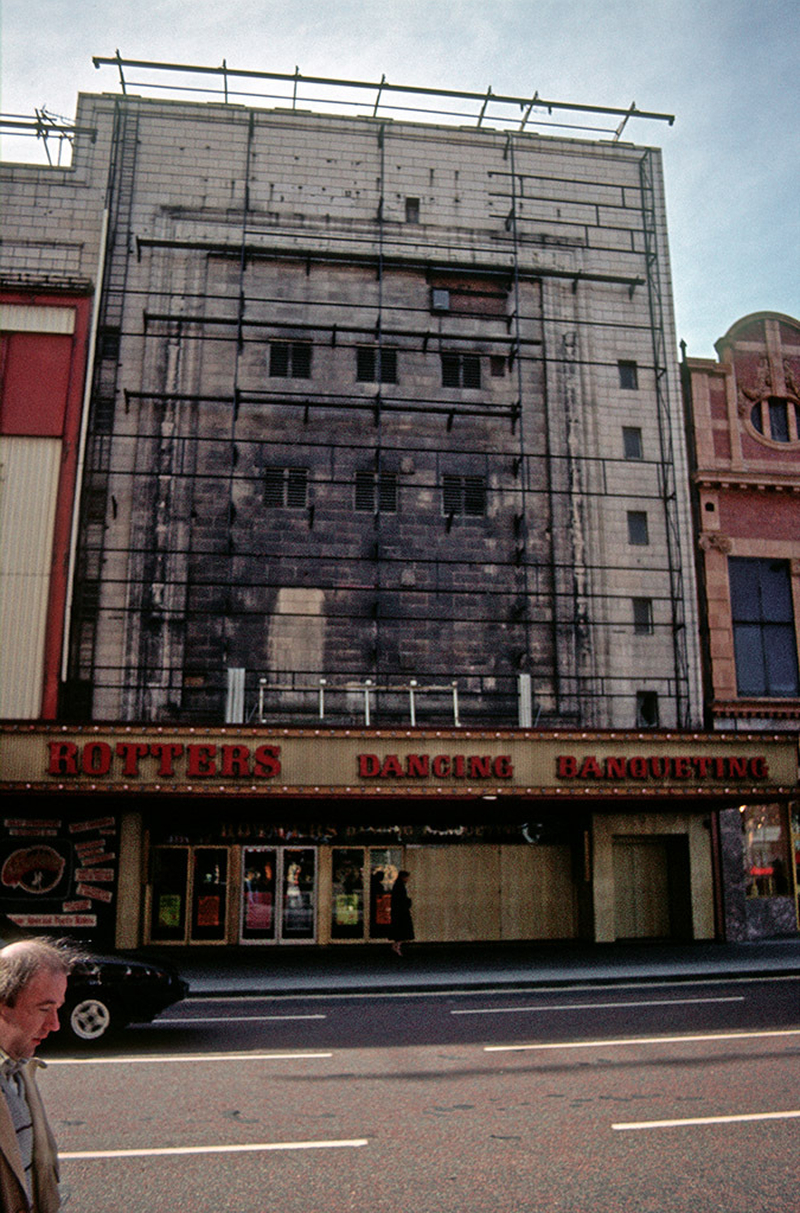 Rotters night club, formerly the Gaumont cinema, Oxford Street, 1987
Rotters night club, formerly the Gaumont cinema, Oxford Street, 1987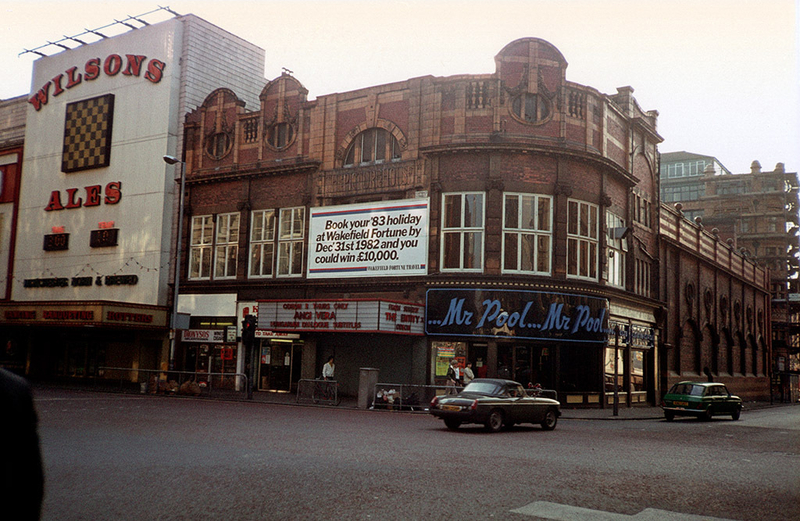 The former Picture House cinema, Oxford Street, 1982.
The former Picture House cinema, Oxford Street, 1982.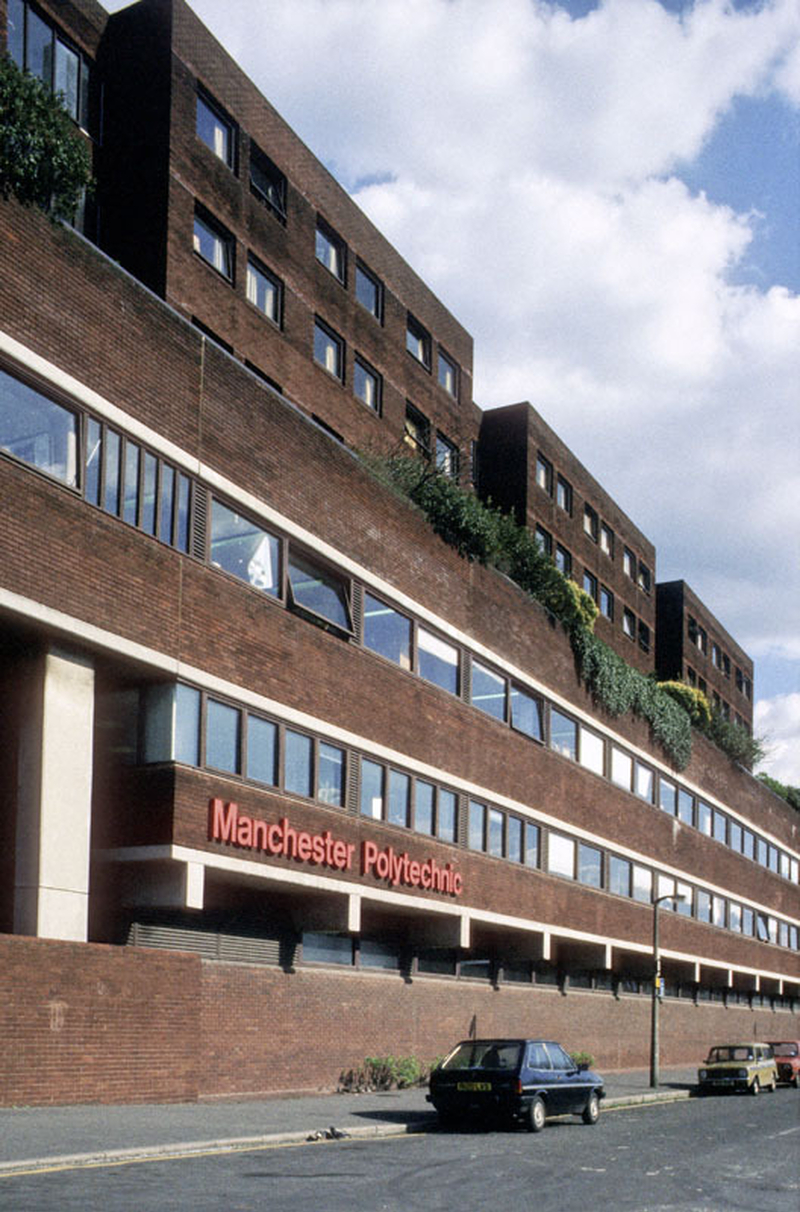 Manchester Polytechnic, 1981.
Manchester Polytechnic, 1981.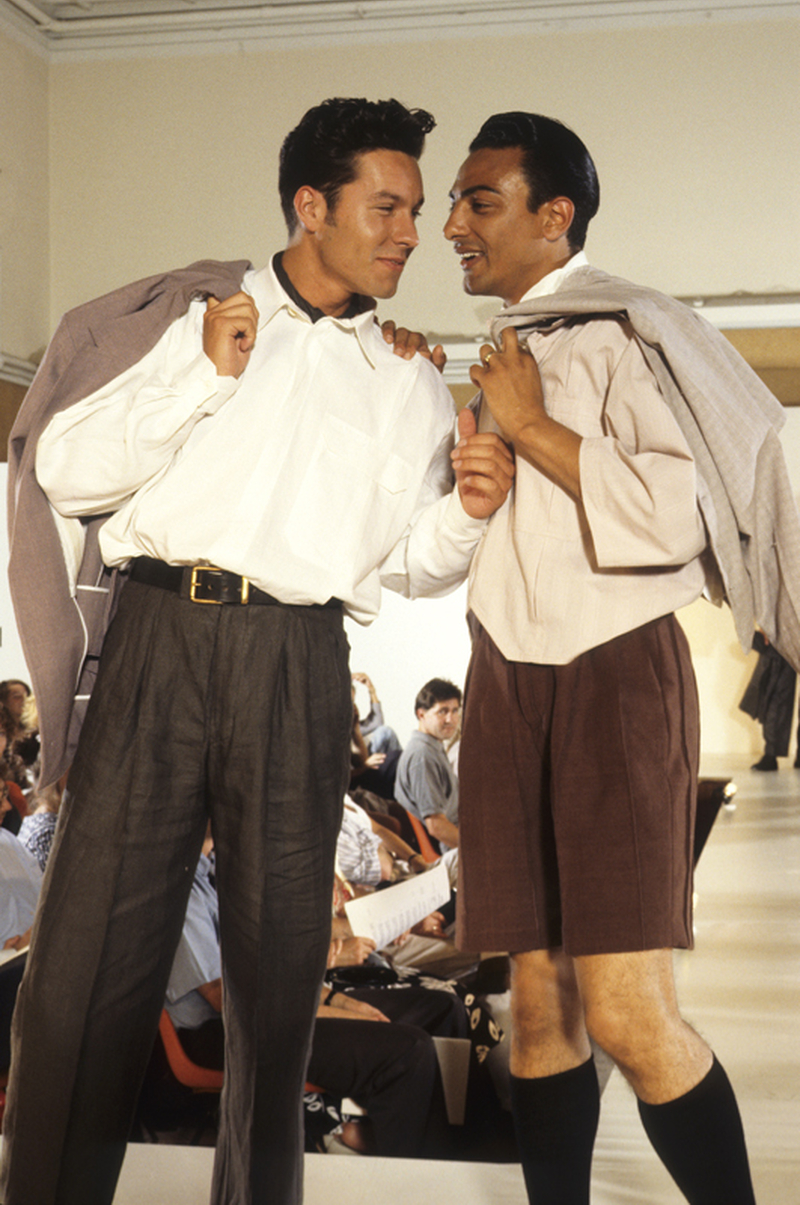 Fashion Show, Manchester Polytechnic, 1989
Fashion Show, Manchester Polytechnic, 1989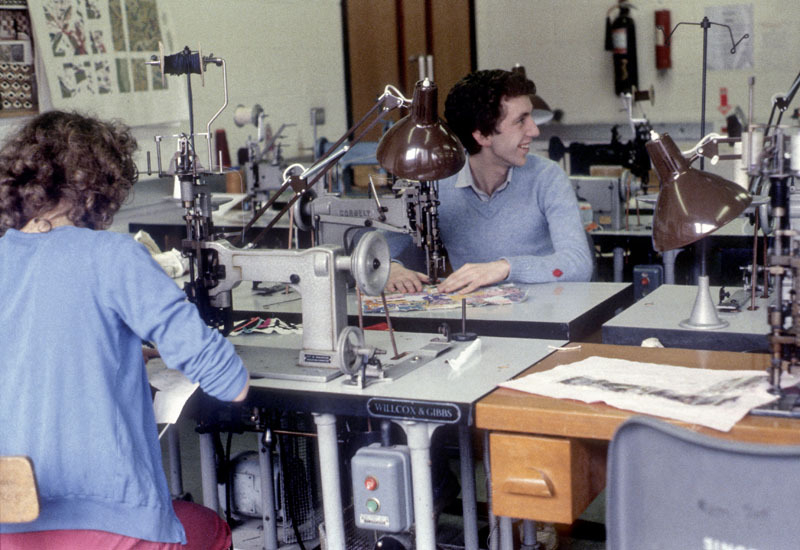 Students working in the embroidery machine room, Manchester Polytechnic, 1982
Students working in the embroidery machine room, Manchester Polytechnic, 1982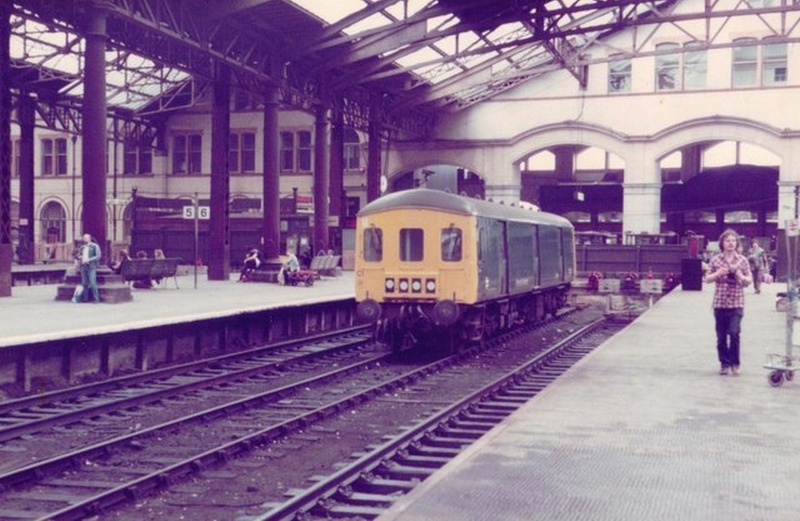 Victoria Station, 1982
Victoria Station, 1982 Central Station, 1980
Central Station, 1980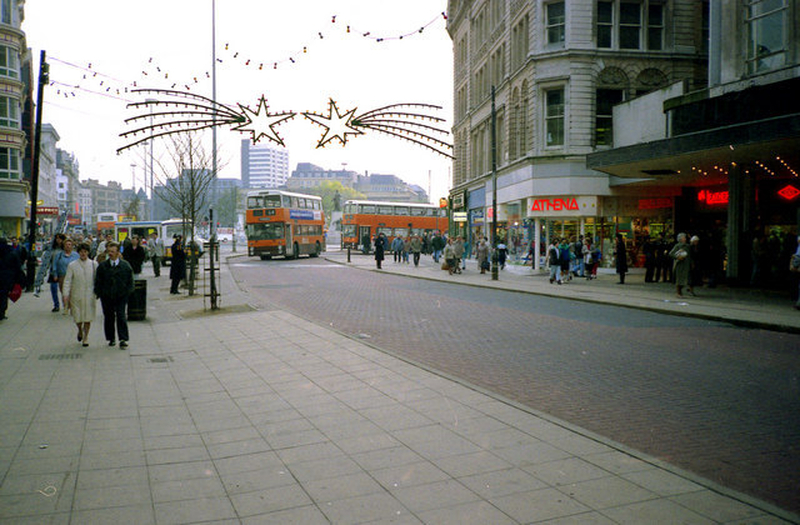 Market Street, 1989
Market Street, 1989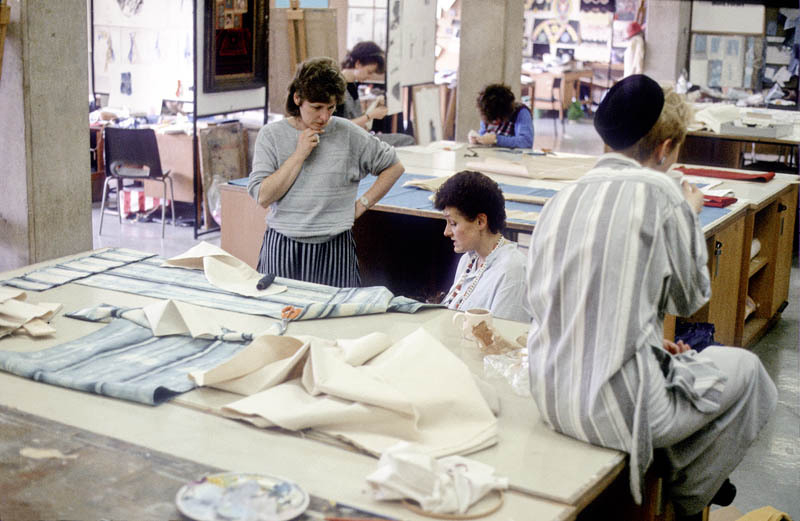 Embroidery studio, Manchester Polytechnic, 1985.
Embroidery studio, Manchester Polytechnic, 1985. Market Street, 1988
Market Street, 1988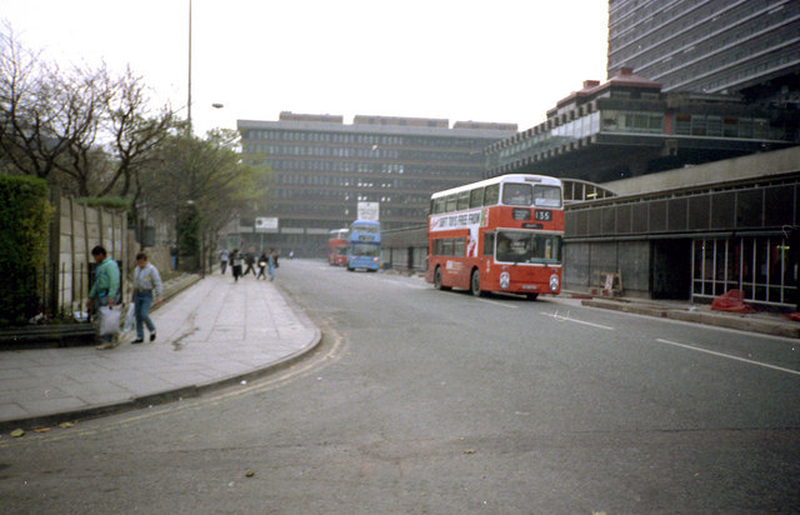 Parker Street, 1989
Parker Street, 1989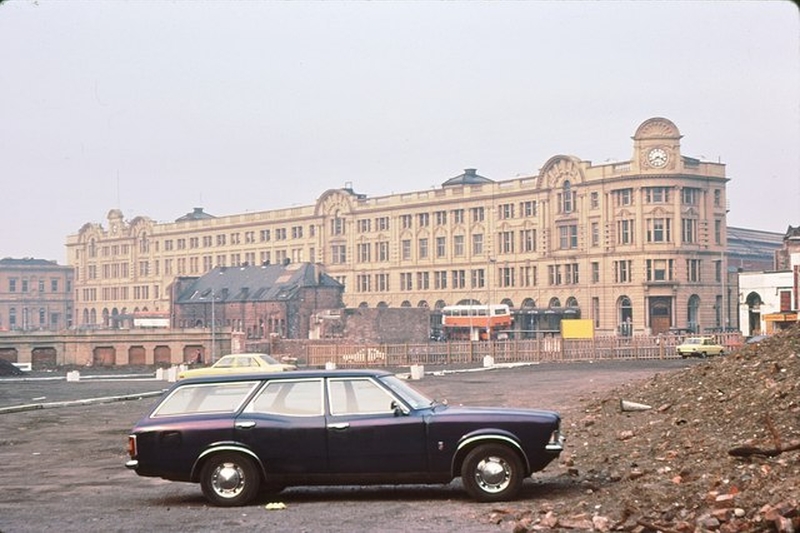 Victoria Station 1982
Victoria Station 1982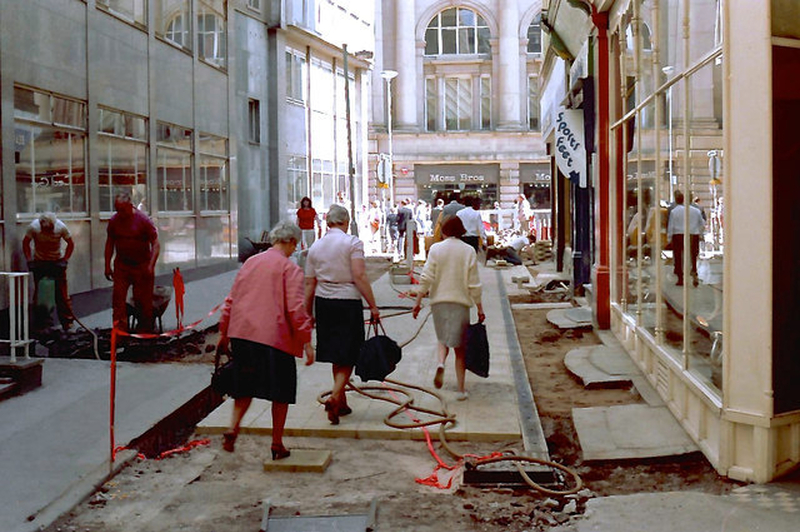 Barton Arcade, 1984
Barton Arcade, 1984 Red Lion Street, 1980
Red Lion Street, 1980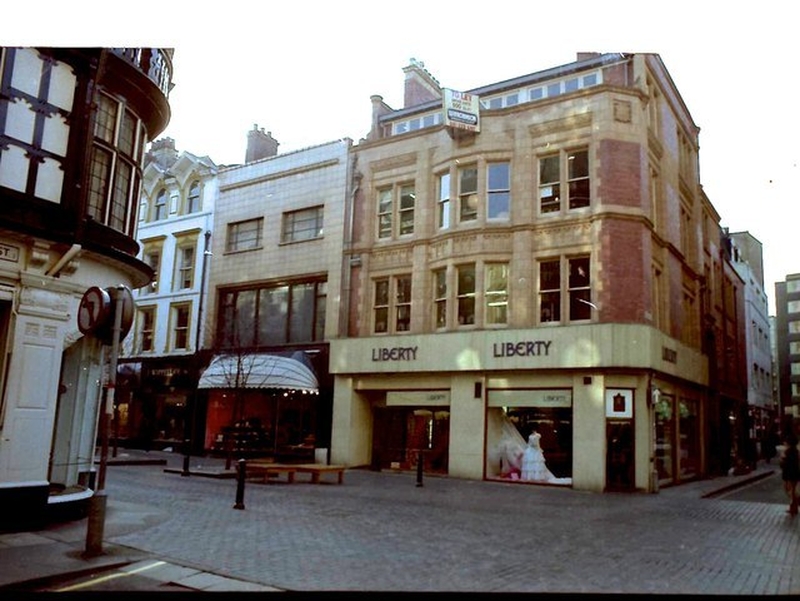 King Street, 1988
King Street, 1988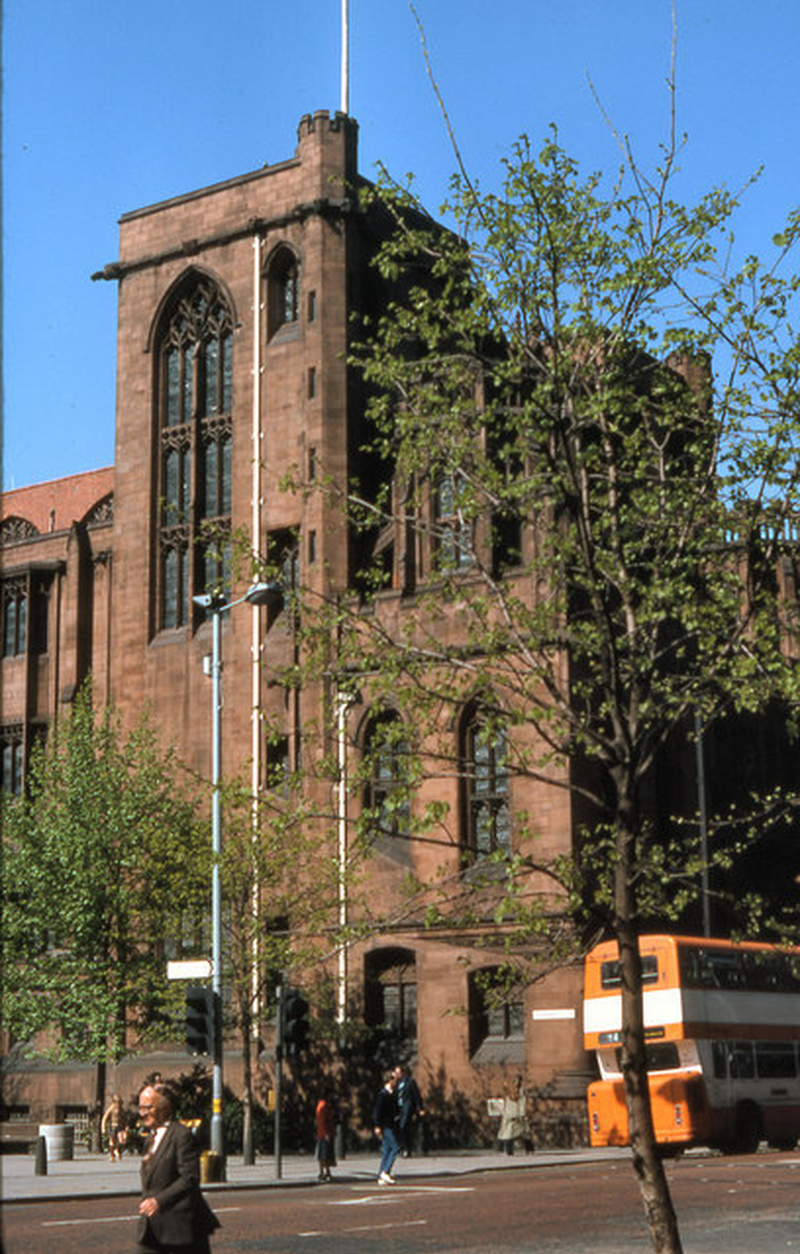 John Rylands Library, 1981
John Rylands Library, 1981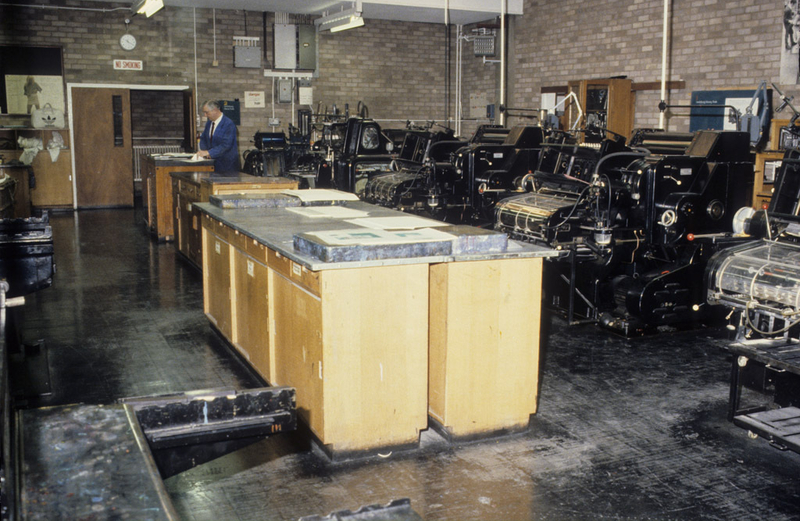 Workshop, Manchester Polytechnic, 1982.
Workshop, Manchester Polytechnic, 1982. Cafe Yaqub, Back Turner Street, 1987
Cafe Yaqub, Back Turner Street, 1987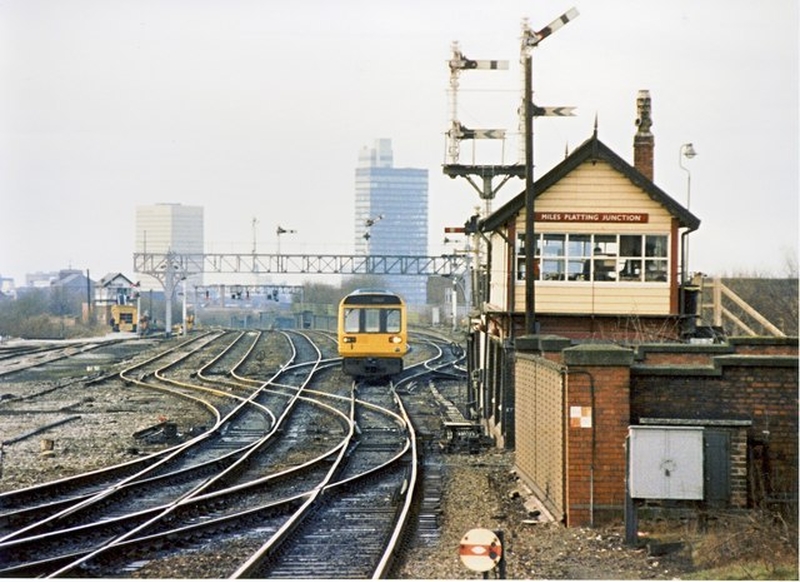 Miles Platting station, 1989
Miles Platting station, 1989 Market Street, 1988
Market Street, 1988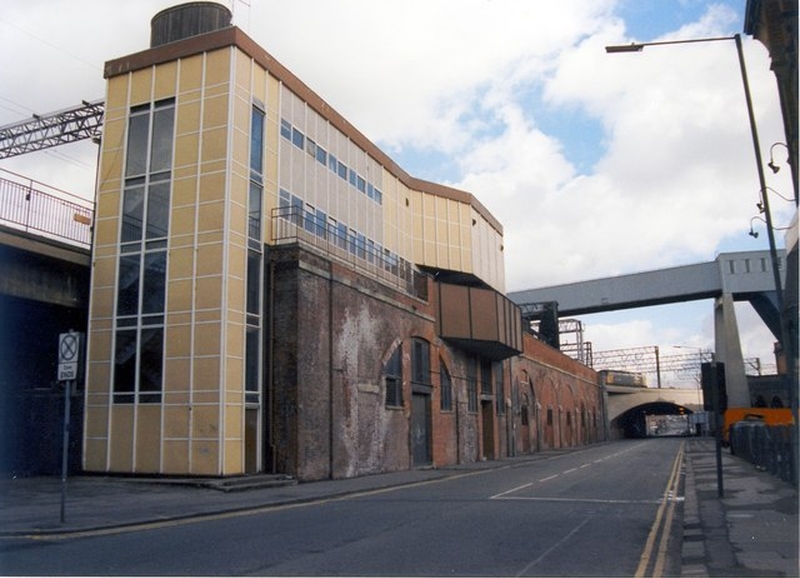 London Road signalbox, 1989
London Road signalbox, 1989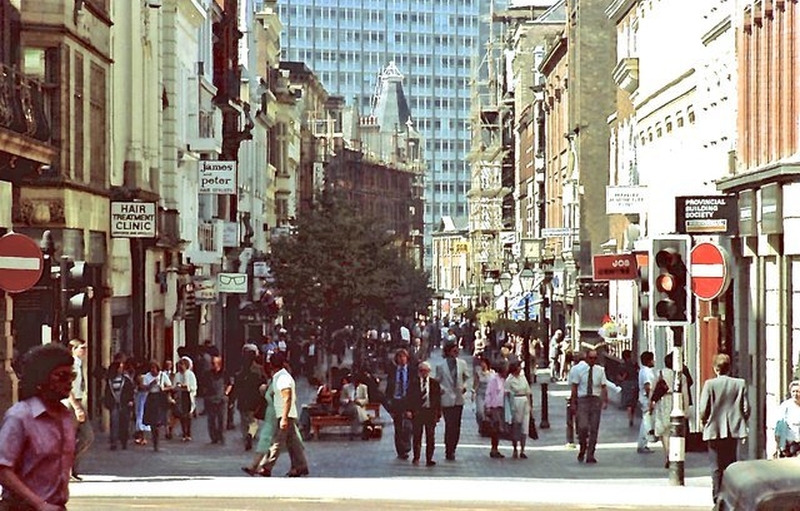 King Street, 1983
King Street, 1983 218x bus to Ashton, Piccadilly, 1981
218x bus to Ashton, Piccadilly, 1981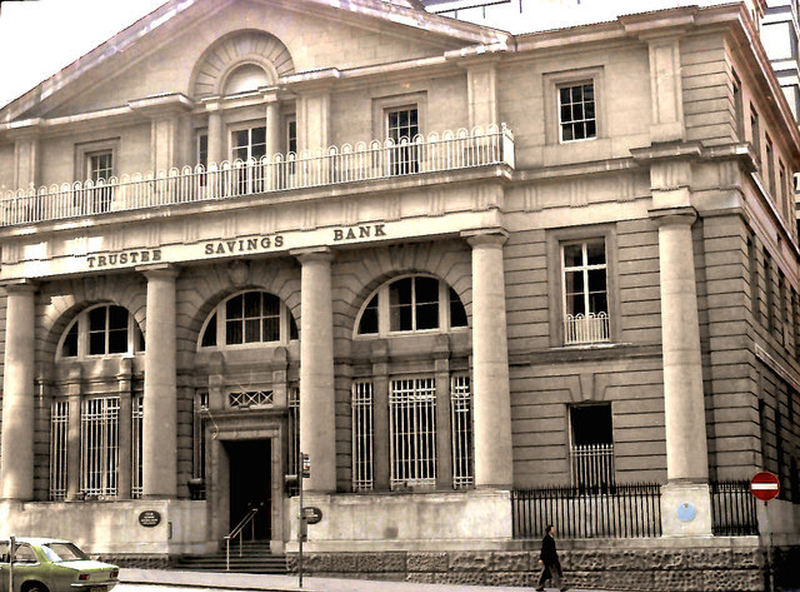 Bank of England, King Street, 1982
Bank of England, King Street, 1982 Cherry blossom in St Mary’s Parsonage, 1982
Cherry blossom in St Mary’s Parsonage, 1982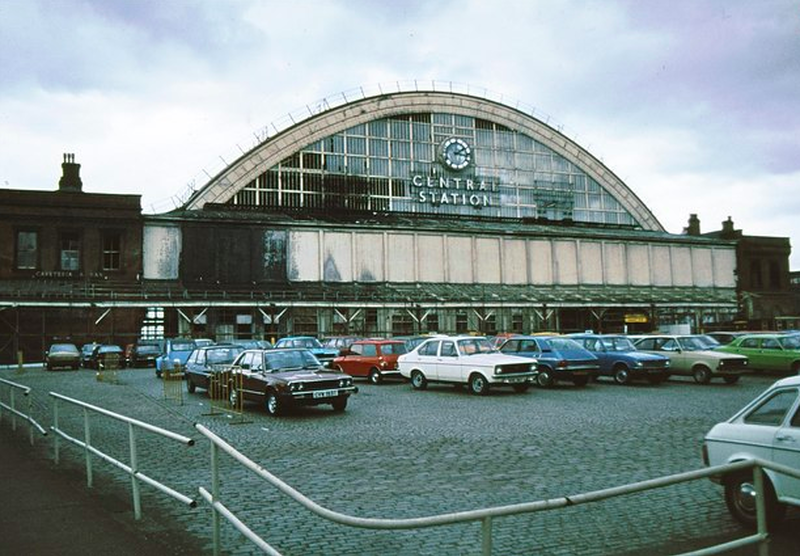 Central Station, 1980
Central Station, 1980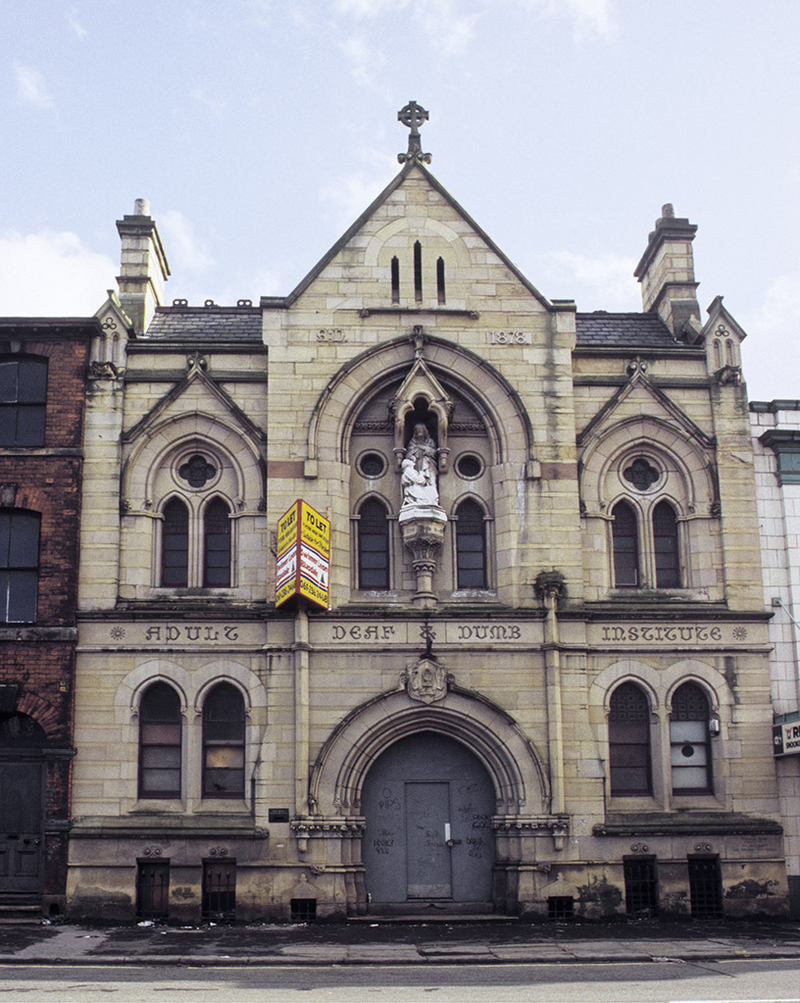 Deaf & Dumb Institute, 1987
Deaf & Dumb Institute, 1987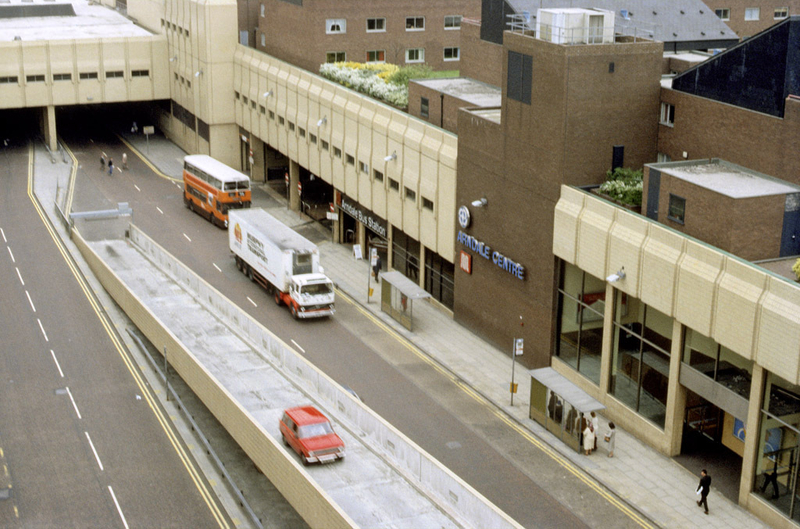 Manchester Arndale Centre, 1985
Manchester Arndale Centre, 1985 Rotters night club, formerly the Gaumont cinema, Oxford Street, 1987
Rotters night club, formerly the Gaumont cinema, Oxford Street, 1987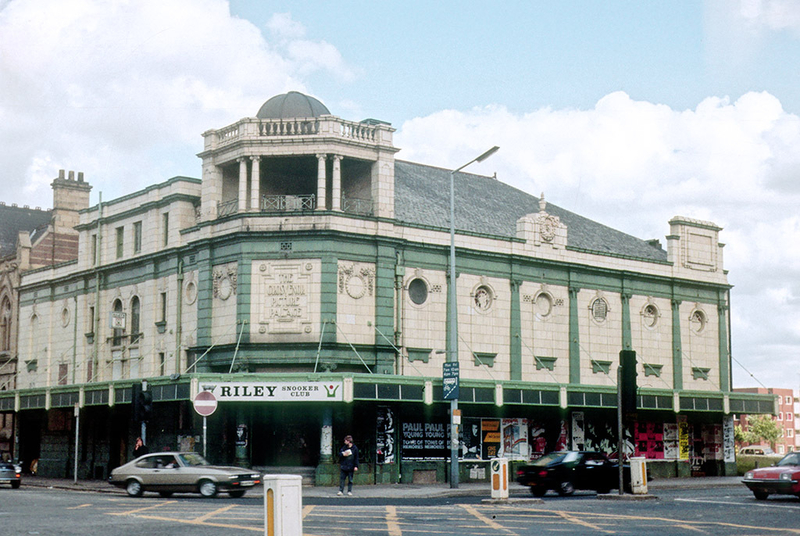 The Grosvenor Picture Palace, 1985
The Grosvenor Picture Palace, 1985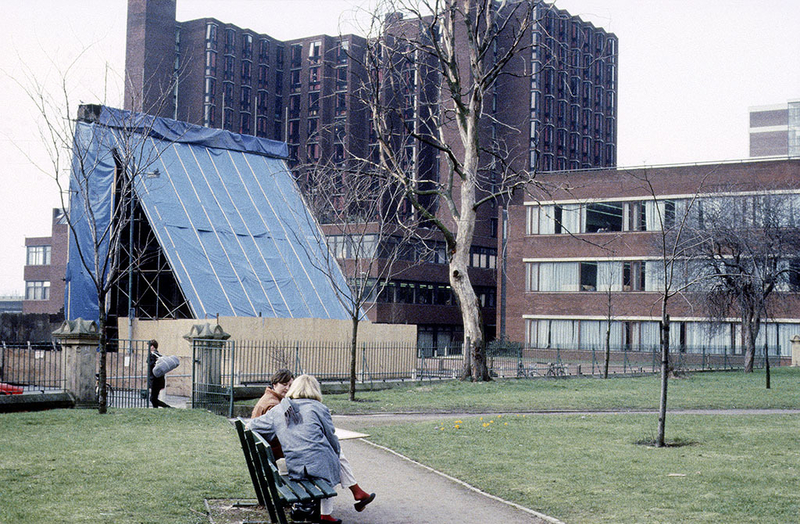 Demolition of the Manchester Ear Hospital, 1984
Demolition of the Manchester Ear Hospital, 1984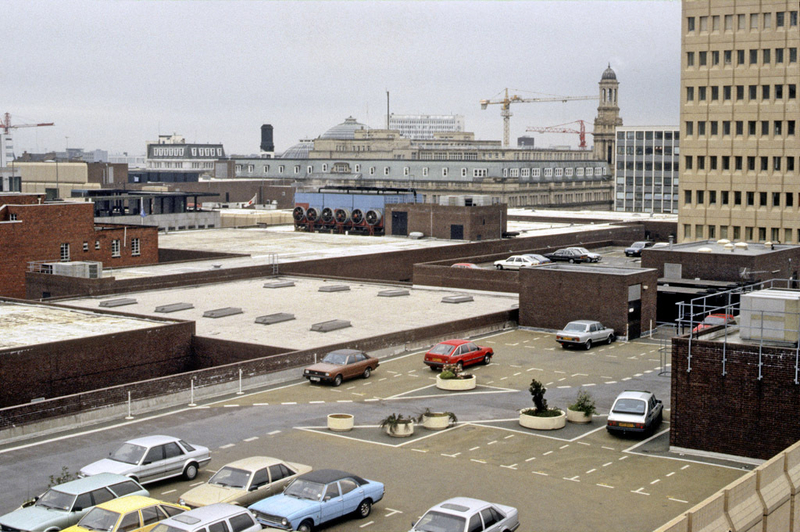 Roof of the Manchester Arndale Centre, 1985
Roof of the Manchester Arndale Centre, 1985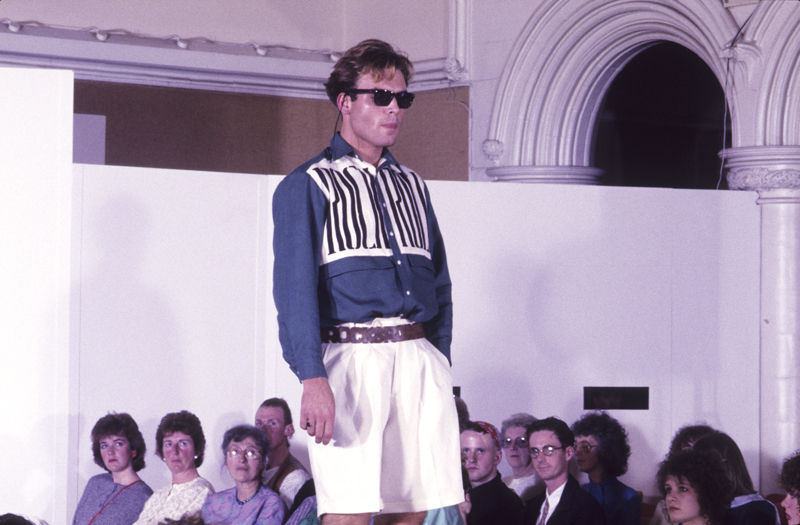 Fashion Show, Manchester Polytechnic, 1988
Fashion Show, Manchester Polytechnic, 1988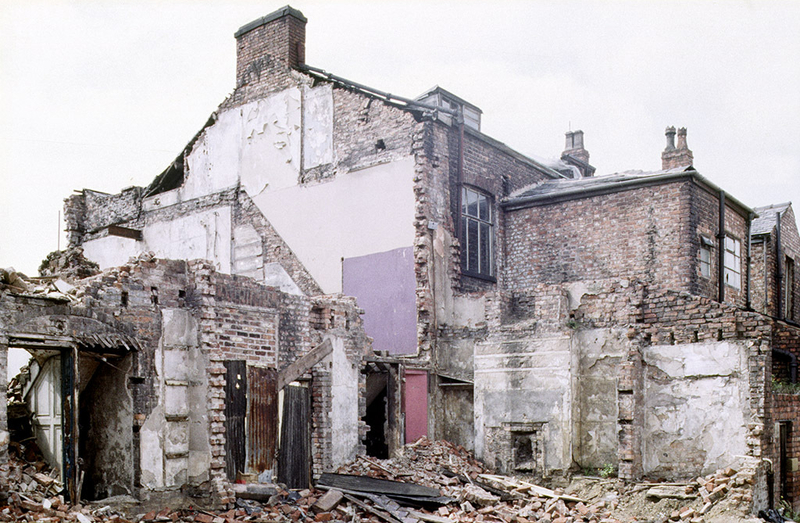 Demolition of Georgian Houses, Grosvenor Place, 1988
Demolition of Georgian Houses, Grosvenor Place, 1988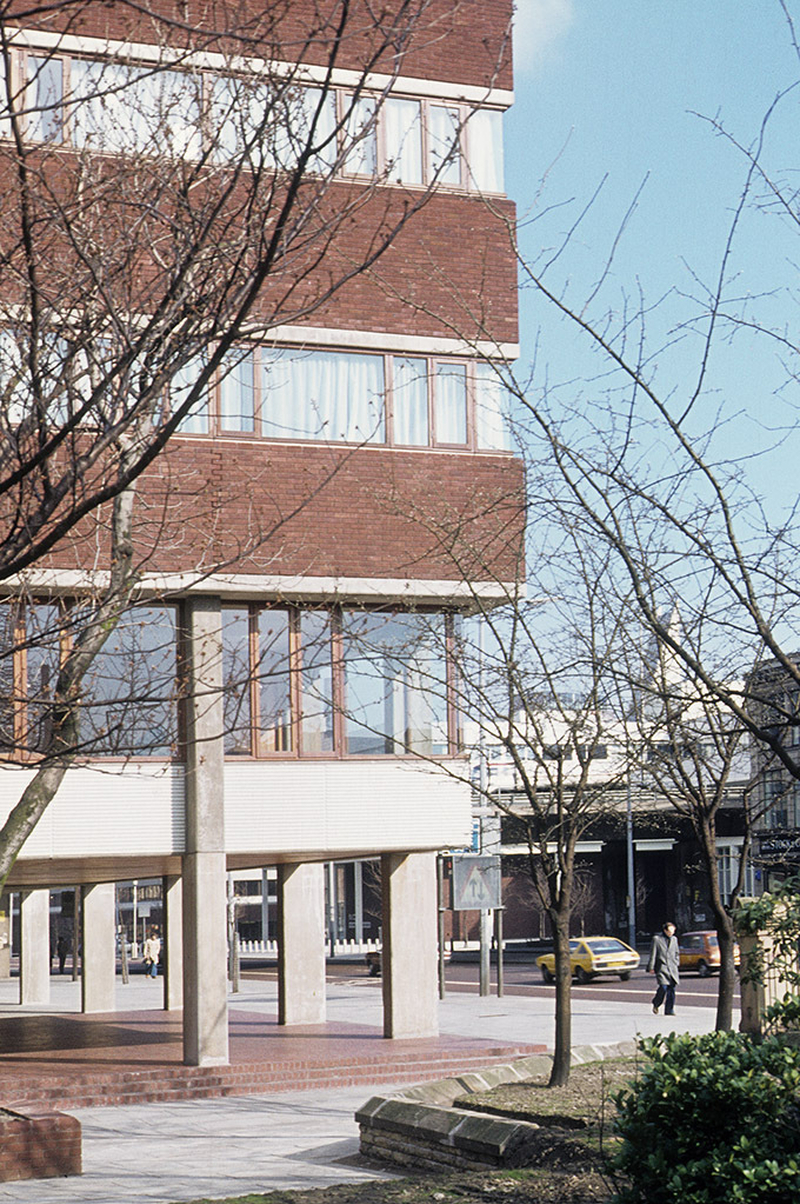 All Saints Building, c.1980
All Saints Building, c.1980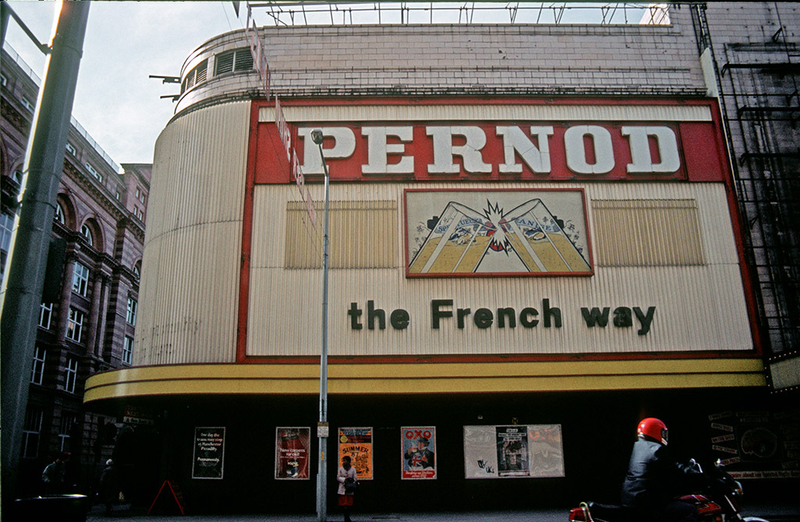 Rotters night club, formerly the Gaumont cinema, Oxford Street, 1987
Rotters night club, formerly the Gaumont cinema, Oxford Street, 1987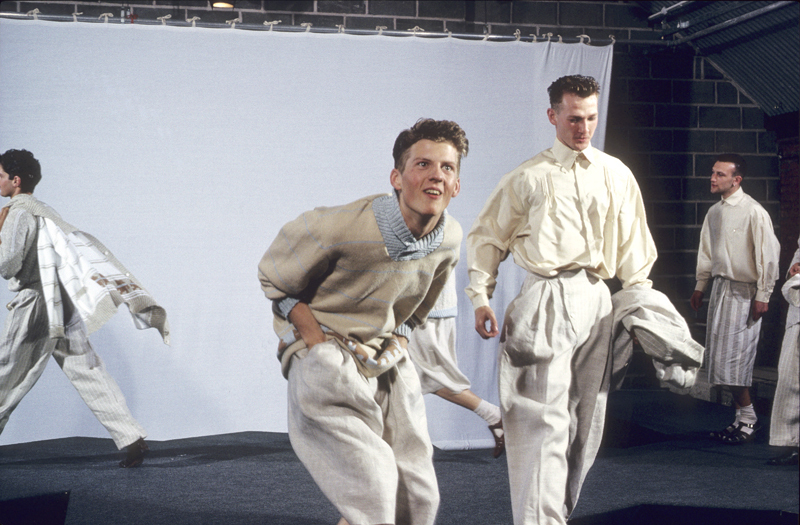 Fashion Show, Manchester Polytechnic, 1987
Fashion Show, Manchester Polytechnic, 1987 St Mary’s Gate, c. 1980
St Mary’s Gate, c. 1980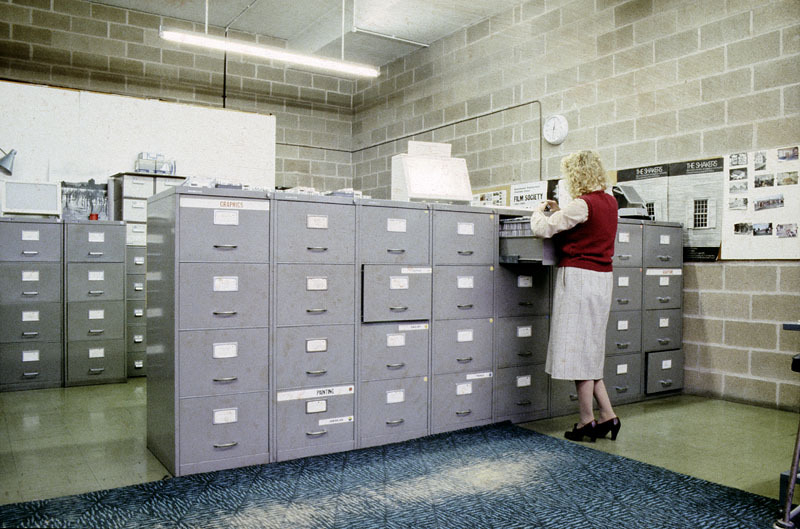 Slide Library, Manchester Polytechnic, 1983-84
Slide Library, Manchester Polytechnic, 1983-84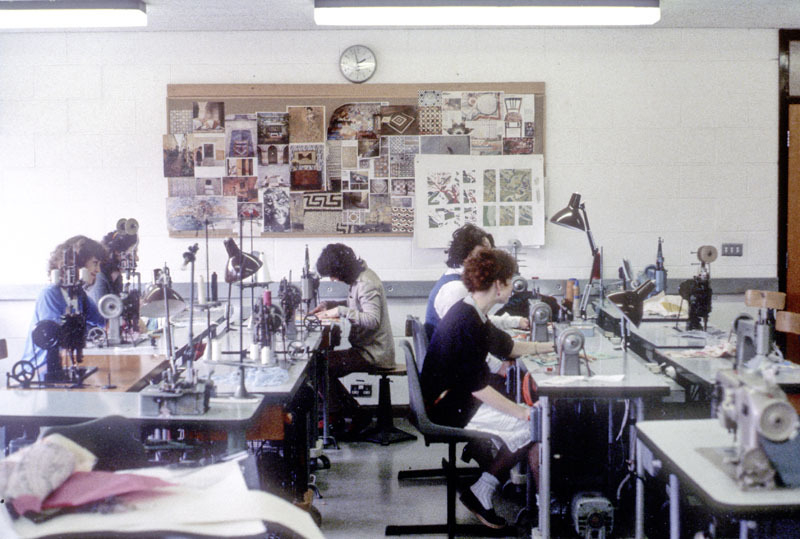 Students working in the embroidery machine room, Manchester Polytechnic, 1982
Students working in the embroidery machine room, Manchester Polytechnic, 1982 Market Street, 1988
Market Street, 1988
Don’t forget to check out our galleries from the 1960s and 1970s. The 1990s edition will follow soon…
Unless specifically credited, images have been sourced via the Visual Resources Collection at Manchester Metropolitan University Special Collections and georgraph.org. All rights reserved.
